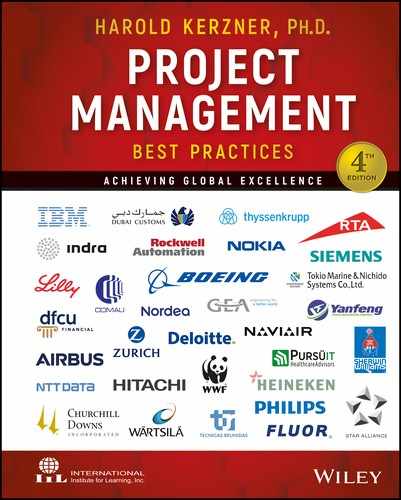15
Global Project Management Excellence
15.0 INTRODUCTION
In the previous chapters, we discussed excellence in project management (PM) the use of PM methodologies, and the hexagon of excellence. Many companies previously described in the book have excelled in all of these areas. In this chapter, we focus on seven companies, namely IBM, Citigroup, Microsoft, Deloitte, Comau, Fluor, and Siemens, all of which have achieved specialized practices and characteristics related to in-depth globalized PM:
- They are multinational.
- They sell business solutions to their customers rather than just products or services.
- They recognize that, in order to be a successful solution provider, they must excel in PM rather than just being good at it.
- They recognize that that they must excel in all areas of PM rather than just one area.
- They recognize that a global PM approach must focus more on a framework, templates, checklists, forms, and guidelines, rather than rigid policies and procedures, and that the approach can be used equally well in all countries and for all clients.
- They recognize the importance of knowledge management, lessons learned, capturing best practices, and continuous improvement.
- They understand the necessity of having PM tools to support their PM approach.
- They understand that, without continuous improvement in PM, they could lose clients and market share.
- They maintain a PM office or center of excellence (CoE).
- They perform strategic planning for PM.
- They regard PM as a strategic competency.
These characteristics can and do apply to all of the companies discussed previously, but they are of the highest importance to multinational companies.
15.1 IBM1
Overview
It has been well publicized over the past number of years that IBM is undergoing one of its most complex and significant transformations since its foundation in 1911.
In addition to being one of the world’s largest information technology (IT) and consulting services company, IBM is a global business and technology leader, innovating in research and development to shape the future of society at large.
Today, IBM sees itself as much more than an information technology company.
In April 2016, IBM’s chairman, president, and chief executive officer, Ginni Rometty, described the dawn of a new era, shaped by cognitive computing and cloud platforms. She described how the IT industry is fundamentally reordering at an unprecedented pace. In response, IBM is becoming much more than a “hardware, software, services” company. We are emerging as an AI solutions and cloud platform company.
Fundamental to the success of this transformation is the skills and abilities of its workforce. Each and every one of us are being challenged to make ourselves relevant to the marketplace of tomorrow. We are all encouraged to undertake at least 40 hours of training each year (Think 40), the majority of which is targeted towards emerging technologies and industry specific expertise.
We are encouraged to have a point of view, be both socially and professionally eminent and be comfortable in a customer facing situation. We are provided with the tools and techniques to enable this objective, including new ways of learning such as video, gaming and interactive eLearning techniques to enable this objective. New phrases are creeping into the everyday vocabulary of our teams, phrases such as how can we “be more agile,” “take more (calculated) risks,” “collaborate better and quicker”?
IBM’s PM Centre of Excellence (PMCOE) is no exception to this transformation. 2017 is the twentieth anniversary of the Centre of Excellence, which clearly shows IBM’s ongoing commitment to Project Management as a key profession within the corporation.
At the heart of our mission is the ongoing requirement to continue enabling and supporting our Project Management Community with industry-leading processes, methods, and tools. However, we are continuing to evolve and challenge ourselves to ensure we meet the demands of our customers, given the continuously and rapidly changing environment we all operate in today.
Complexity
When you step back and look at the scale and diversity of the tens of thousands of concurrent projects being managed by our community, it can be truly staggering. We are not only asking our project managers to manage across the traditional boundaries of time, budget, and resourcing, but we now need to understand and be able to clearly articulate;
- Emerging technologies (e.g., cognitive, Internet of Things, cloud etc.)
- Traditional versus hybrid enterprises (on-premise, off-premise, virtual, etc.)
- Industry-specific solutions (e.g., energy, automotive, public, etc.)
- Platform-specific solutions (e.g., as service offerings)
- Client-specific solutions (e.g., customized solutions, integration across multiple diverse legacy environments, etc.)
The majority of our teams as well as our clients’ teams are invariably global in nature, requiring all of us to become experts in cultural, geopolitical, and sometimes religious differences.
In the following sections, we outline how the PMCOE empowers our PM community. Later on, we discuss future trends and opportunities.
IBM’s Project Management System
Successful implementation of projects and programs requires a management system that addresses all aspects of planning, controlling, and integrating with business and technical processes.
IBM’s structured PM system addresses delivery challenges to reliably deliver business commitments to its clients.
- Risks are clearly defined and managed more effectively because the project is properly defined, within the client’s business environment.
- Productivity is increased by a clear definition of roles, responsibilities and deliverables resulting in faster start-up through the use of knowledge management, less rework, and more productive time in the project.
- Communication is easier and clearer because project teams (client and IBM) form more quickly and use common terminology.
- Client visibility to the project plans, schedule, and actual performance against the project objectives is enhanced, helping to increase client satisfaction.
- Client desired outcomes are aligned to project deliverables.
IBM’s comprehensive PM system has three dimensions: coverage, depth, and scope applicable to projects and programs (see Figure 15-1).
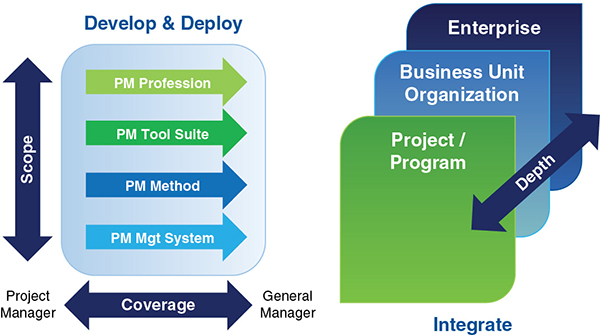
Figure 15-1. The three dimensions of IBM’s project management system.
The first dimension is scope. IBM has developed the enablers and professionals needed to manage the delivery of projects and programs of all sizes and complexity. These enablers include: a full-scope PM method, a PM Tools Suite, PM management systems, and a staff of PM professionals that are trained and experienced in these enablers. The enablers are integrated so that they complement and support each other.
The second dimension, coverage, ensures the enablers (method, tool suites, and processes) are comprehensive and scalable to appropriately serve the requirements of the enterprise’s management team, from projects to programs and portfolios. IBM’s PM professionals also have a range of skills and experience from project manager to executives.
The third dimension is depth. Depth addresses the integration of project/program management disciplines and data with the management systems of the enterprise at all levels.
In summary, IBM’s PM approach involves building PM deliverables that have the full scope of items needed to implement and control the delivery of a project or program, have the coverage to be applicable from the top to the bottom of the organization, and have the depth to be integrated into the very essence of the enterprise.
IBM’s structured approach to managing projects and programs includes understanding and adapting to meet our clients’ needs and environment. A PM system is the core of this structured approach.
IBM’s Project Management Methodology
To provide its project teams with consistent methods for implementing PM globally, IBM developed the Worldwide Project Management Method (WWPMM), which establishes and provides guidance on the best PM practices for defining, planning, delivering, and controlling a wide variety of projects and programs. (See Figure 15-2.)
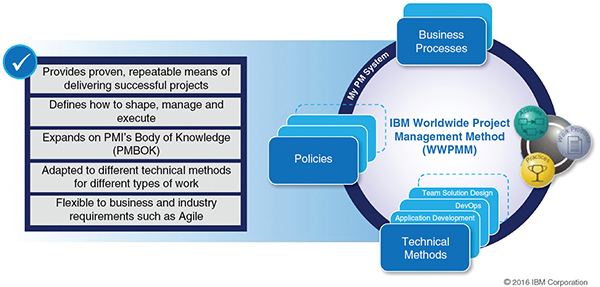
Figure 15-2. Customized project management system.
The goal of IBM’s PM method is to provide proven, repeatable means of delivering solutions that ultimately result in successful projects/programs and satisfied clients.
WWPMM is an implementation of the Project Management Institute’s (PMI’s) Project Management Body of Knowledge (PMBOK® Guide)2 for the IBM environment. WWPMM extends PMI’s PMBOK® Guide processes in depth and in breadth and specifies PM work products content.
WWPMM has positioned agile for the PM community since 2008, and WWPMM has been updated through the years to provide more support for projects using agile principles and techniques. WWPMM (agile) is published as a separate PM method and includes additional guidance in support of agile and work products that align with agile techniques. The approach taken was to use agile in generic terms and not select a specific agile technique (such as Scrum, Kanban, XP).
WWPMM describes the way projects and programs are managed in IBM. They are documented as a collection of plans and procedures that direct all PM activity and records that provide evidence of their implementation. In order to be generic and applicable across IBM, the PM method does not describe life-cycle phases but rather PM activity groups that can be used repeatedly across any life cycle. This allows the flexibility for the method to be used with any number of technical approaches and life cycles.
WWPMM consists of a number of interrelated components:
- PM Practices group the tasks, work products, and guidance needed to support a particular area of knowledge
- PM Activities arrange the tasks defined in the PM practices into a series of executable steps designed to meet a particular PM goal or in response to a particular PM situation.
- PM Work Products are the verifiable outcomes produced and used to manage a project.
WWPMM includes a set of templates or tool mentors for plans, procedures, and records that may be quickly and easily tailored to meet the needs of each individual project.
According to Laura Franch, IBM’s WWPMM leader:
The continuous integration of IBM’s project management methodology with other IBM initiatives, enhancements from lessons learned and alignment with external standards are necessary to ensure WWPMM will lead to worldwide excellence in the practice of project management.
IBM uses WWPMM to estimate, plan, and manage application development projects. The key activities involved with this process include:
- Defining, planning, and estimating each aspect of the project
- Organizing, controlling, and managing multiple types of projects (stand-alone, cross-functional, and matrix-based)
- Delivering projects in a common fashion across all platforms
- Capturing, tracking, and reporting performance-based information
- Managing exceptions including risks, issues, changes, and dependencies
- Ensuring project benefits are being realized
- Communicating, on an ongoing basis, with constituencies that are involved in the project, and reporting status and issues to the client’s executive management
- Analyzing the project after implementation to verify that standard processes have been followed and to identify process improvement activities for future projects
These key activities are supported by tools and techniques for project planning, work plan generation, estimating costs and schedules, time tracking, and status reporting.
Keeping with the need to be flexible, the PM system templates and work products can be tailored to meet geography, business line, or client-specific requirements while still maintaining our commitment for “one common project management method.” The WWPMM is available for licensing to IBM clients for their use and for further benefit beyond the scope and scale of a specific project.
The OnDemand Process Asset Library (OPAL) represents an implementation of the WWPMM that supports industry standards, such as the Software Engineering Institute’s (SEI’s) Capability Maturity Model Integration (CMMI).
IBM’s Enterprise Project Management Office
As part of its project-based mission, the IBM PMCOE focuses on the understanding and implementation of project management offices (PMOs). Enterprise PMOs are instrumental to an organization’s ability to define, control and deliver more predictable project results.
IBM’s Enterprise PMOs enable continual alignment with the organization’s strategy, support standardized PM, and focus on talent management. (See Figure 15-3.)
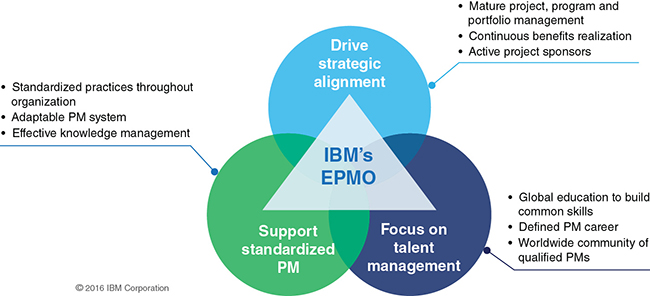
Figure 15-3. IBM’s Enterprise Project Management Office.
IBM’s Enterprise PMO addresses the numerous challenges project teams face by focusing on six key success factors:
- Ensuring all key stakeholders understand the value of PM
- Actively engaging sponsors/executives, addressing their key issues, and generating the support required for the project/program
- Ensuring strategic alignment between business goals and projects executed by enabling executive teams to make informed decisions and choose the right projects to achieve business value
- Using standardized PM practices to support the enterprise strategy and provide the right level of control to reduce risk and ensure successful delivery.
- Using PM Best Practices, assets, and intellectual capital enables organizations to reduce risk and deliver repeatable, high-value, and high-quality solutions.
- Investing in developing project managers’ talent to achieve superior project performance and execution of strategic initiatives
The Enterprise PMO provides the governance, discipline, and resources to effectively manage a portfolio of projects within an organization.
IBM partners with clients to determine the Enterprise PMO suitable to deliver the intended business results and provides methods, processes, and practices for an effective design and implementation of project office capabilities. (See Figure 15-4.)
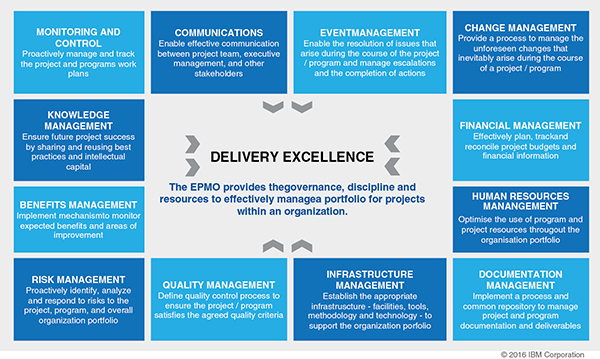
Figure 15-4. Project Office capabilities design and implementation.
IBM’s Business Processes
IBM’s basic business processes are seamlessly integrated with our methods. Three of these processes directly benefit many of the projects we manage: quality, knowledge management, and maturity assessment.
Quality
IBM’s PM method readily conforms to ISO Quality standards. This means that project managers using WWPMM do not have to spend extra time trying to establish a quality standard for their project as the quality standard is already built into a project’s management system.
Within IBM Global Services, IBM’s business practices require an independent quality assurance review of most projects performed by our worldwide Quality organization. Project reviews play an important role by identifying potential project issues before they cause problems thereby helping to keep projects on time and on budget. The IBM internal reviews and assessments are performed at various designated checkpoints throughout the project life cycle.
Knowledge Management
IBM PM best practices, assets, and intellectual capital represent the combined expertise of tens of thousands of IBM project managers over decades of work and experience delivering projects and programs. Formal PMPM knowledge networks have been established that allow project managers to share expertise in a global environment.
IBM project managers also have access to project intellectual capital including reusable work products, such as architectures, designs, plans, and others. Project managers are encouraged to share their own knowledge and expertise by publishing project work products and experiences. Capturing the best practices and lessons learned on completed projects is fundamental to ensuring future project success.
Maturity Assessment
IBM has developed a comprehensive tools and best practices, the Project Management Progress Maturity Guide (PMG), to assess its current PM capabilities and the PM services it provides its clients and improve them over time.
IBM PM Capability assessment is adapted from SEI’s CMMI, IBM, and industry PM best practices. It measures the degree to which elements of a PM process or system are present, are integrated into the organization, and ultimately affect the organization’s performance. The assessment is performed against 26 best practices through documentation and interviews to look for evidence of deployment, usage, coverage, and compliance. It provides:
- Current capability strengths, weaknesses, and a prioritized list of gaps
- Improvement action recommendations for high- and medium-priority gaps
- An overall maturity level rating for each best practice
For maximum value, an organization should determine a PM maturity baseline; effectively prioritize, plan and implement improvement opportunities; and then measure across time to verify consistent improvement in the organization’s PM capabilities. By understanding the organization’s strengths and weaknesses, actions can be identified for continuously improving PM and achieving business objectives.
As an organization’s PM maturity improves, projects are delivered more efficiently, customer satisfaction improves, and stronger business results are achieved.
IBM’s Project Management Skills Development Programs
Enhancing the integration of the methods, business processes, and policies is the ongoing development of IBM’s PM professionals through education and certification.
Education
IBM’s PM Curriculum is delivered globally and across all lines of business, helping to drive a consistent base of terminology and understanding across the company. Though they are clearly an important audience for the training, attendance is not limited just to project managers. Rather, the curriculum is there to meet the project manager training needs of all IBMers irrespective of what job role they perform. A range of delivery modes are utilized depending on the course content and intended audience. As well as the traditional classroom format, an increasing amount of instructor-led learning is delivered through online virtual classrooms. Extensive use of self-paced online learning provides easy access to curriculum content at a time and place of the learner’s choosing. A Curriculum Steering Committee, composed of representatives from across IBM’s lines of business, provides governance of the development of curriculum content. This ensures that the curriculum continues to meet the evolving needs of all parts of the business.
The PM Curriculum is arranged into four distinct sections.
The Core Curriculum addresses the fundamentals of PM. Employees with limited, or no, prior knowledge can use this section of the curriculum to gain a solid grounding in the disciplines of PM. Introductory courses lay the foundations and more specific courses build on these to develop capabilities in PM systems, contracting, finance, project leadership, and IBM’s WWPMM. A separate integrative course completes this section of the curriculum by drawing together the theoretical learning from the earlier courses and blending that with a focus on the practical application of that knowledge.
The Enabling Education section provides the opportunity to build on learning from the core curriculum and deepen PM skills in specific areas. This would include more in-depth training on topics such as leadership, training in the use of specific PM tools, and more situational topics such as working across cultural boundaries.
The Program Management section is focused on enhancing general business skills expected of more senior roles and on providing project-based tools and techniques needed to manage large programs with multiple projects and business objectives.
The Understanding the Basics section contains courses aimed at employees who support or work on project teams. Basic introductory courses on PM provides them with an understanding of how projects are run and key terms but does not seek to develop them into project managers.
As we have already noted, the PM Curriculum provides training to people in a wide range of job roles, not just project managers. Conversely it is also the case that the PM Curriculum does not set out to meet all the learning needs of IBM’s project managers. For example, project managers will also require a range of skills specific to their operational context (e.g., leadership, industry expertise, culture, etc.) and this will be drawn from IBM’s broader learning provision.
Certification
The PM profession is one of several IBM global professions established to ensure availability and quality of professional and technical skills within IBM. The PM Professional Development initiative includes worldwide leadership of IBM’s PM profession, its qualification processes, IBM’s relationship with PMI, and PM skills development through education and mentoring. These programs are targeted to cultivate project and program management expertise and to maintain standards of excellence within the profession. The bottom line is to develop practitioner competency.
What is the context of a profession within IBM? IBM professions are self-regulating communities of like-minded and skilled IBM professionals and managers who do similar work. Their members perform similar roles wherever they are in the organizations of IBM and irrespective of their current job title. Each profession develops and supports its own community including providing assistance with professional development, career development, and skills development. The IBM professions:
- Help IBM develop and maintain the critical skills needed for its business
- Ensure IBM clients are receiving consistent best practices and skills in the area of PM
- Assist employees in taking control of their career and professional development
All IBM jobs have been grouped into one of several different functional areas, called job families. A job family is a collection of jobs that share similar functions or skills (e.g., managing project risk, apply knowledge of release planning, etc.). If data is not available for a specific job, the responsibilities of the position are compared to the definition of the job family to determine the appropriate job family assignment.
Project managers and, for the most part, program managers fall into the PM job family. PM positions ensure customer requirements are satisfied through the formulation, development, implementation and delivery of solutions. PM professionals are responsible for the overall project plan, budget, work breakdown structure, schedule, deliverables, staffing requirements, managing project execution and risk, and applying PM processes and tools. Individuals are required to manage the efforts of IBM and customer employees as well as third-party vendors to ensure that an integrated solution is provided to meet the customer needs. The job role demands significant knowledge and skills in communication, negotiation, problem solving, and leadership. Specifically, PM professionals need to demonstrate skill in:
- Relationship management skills with their teams, customers, and suppliers
- Technology, industry, or business expertise
- Expertise in methodologies
- Sound business judgment
Guidance is provided to management on classifying, developing, and maintaining the vitality of IBM employees. In the context of the PM profession, vitality is defined as professionals meeting PM skill, knowledge, education, and experience requirements (qualification criteria) as defined by the profession, at or above their current level. Minimum qualification criteria are defined for each career milestone and used as an individual’s business commitments or development objectives, in addition to business unit and individual performance targets.
Skilled project and program management professionals are able to progress along their career paths to positions with more and more responsibility. For those with the right blend of skills and expertise, it is possible to move into program management, project executive, and executive management positions. Growth and progression in the profession are measured by several factors:
- General business and technical knowledge required to be effective in the job role
- PM education and skills to effectively apply this knowledge
- Experience that leverages professional and business-related knowledge and skills on the job
- Contributions to the profession, known as giveback, through activities that enhance the quality and value of the profession to its stakeholders
IBM’s project and program management profession has established an end-to-end process to “quality assure” progress through the PM career path. This process is called “qualification” and it achieves four goals:
- Provides a worldwide mechanism that establishes a standard for maintaining and enhancing IBM’s excellence in project and program management. This standard is based on demonstrated skills, expertise, and success relative to criteria that are unique to the profession
- Ensures that consistent criteria are applied worldwide when evaluating candidates for each profession milestone
- Maximizes customer and marketplace confidence in the consistent quality of IBM PM professionals through the use of sound PM disciplines (i.e., a broad range of project and program management processes, methodologies, tools and techniques applied by PM professionals in IBM)
- Recognizes IBM professionals for their skills and experience
The IBM project and program management profession career path allows employees to grow from an entry level to an executive management position. Professionals enter the profession at different levels depending on their level of maturity in PM. Validation of a professional’s skills and expertise is accomplished through the qualification process. The qualification process is composed of accreditation (at the lower, entry levels), certification (at the higher, experienced levels), recertification (to ensure profession currency), and/or level moves (moving to a higher certification milestone). (See Figure 15-5.)
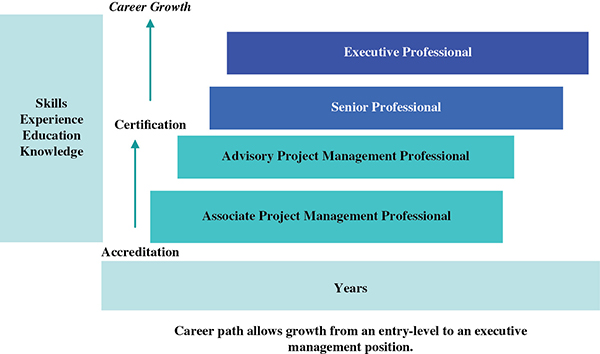
Figure 15-5. IBM’s Project and Program Management career growth path.
Accreditation is the entry level into the qualification process. It occurs when the profession’s qualification process evaluates a PM professional for associate and advisory milestones.
Certification is the top tier of the qualification process and is intended for the more experienced project or program manager. It occurs when the profession’s qualification process evaluates a PM professional for senior and executive project management milestones. These milestones require a more formal certification package to be completed by the project manager. The manager authorizes submission of the candidate’s package to the Project Management Certification Board. The IBM Project Management Certification Board, comprised of profession experts, administers the authentication step in the certification process. The board verifies that the achievements documented and approved in the candidate’s certification package are valid and authentic. Once the board validates that the milestones were achieved, the candidate becomes certified as a senior or executive PM.
Recertification evaluates IBM certified PM professionals for currency at senior and executive PM milestones. Recertification occurs on a three-year cycle and requires preparing a milestone package in which a project manager documents what he/she has done in PM, continuing education, and giveback since the previous validation cycle.
IBM continues to be committed to improving its PM capabilities by growing and supporting a robust, qualified PM profession and by providing quality PM education and training to its practitioners (see Figure 15-6).
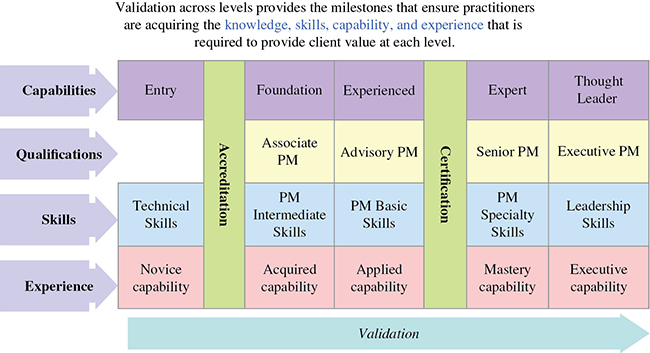
Figure 15-6. Career framework validation
Equally important to project manager development and certification is a refinement of the process by which project managers are assigned. Projects are assessed based on size, revenue implications, risk, customer significance, time urgency, market necessity, and other characteristics; certified project managers are assigned to them based on required education and experience factors (see Figure 15-7).
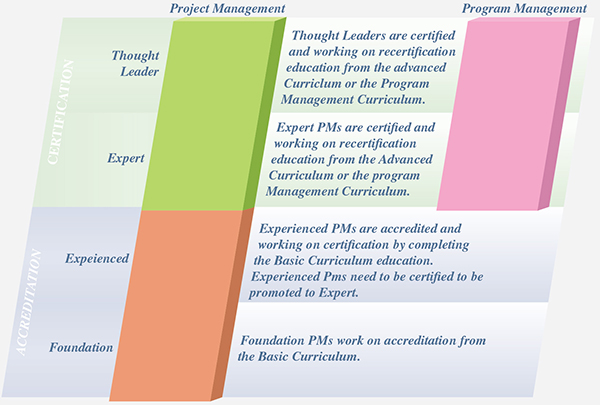
Figure 15-7. The Refinement Process
Guidance is provided to management on classifying, developing, and maintaining the vitality of IBM employees. In the context of the PM profession, vitality is defined as professionals meeting PM skill, knowledge, education, and experience requirements (qualification criteria) as defined by the profession, at or above their current level. Minimum qualification criteria are defined for each career milestone and used as individual’s business commitments or development objectives, in addition to business unit and individual performance targets.
The PM CoE is chartered to increase Practitioner Competency in project and program management across IBM. This includes worldwide leadership of IBM’s PM profession, its Managing Projects and Programs validation processes, and IBM’s relationship with PMI, as well as project and program management skills development through education and mentoring. A global team works to cultivate this project and program management expertise and to maintain standards of excellence within the PM profession.
Digital Credentials for the IBM Project Management Profession
IBM is one of the early adopters of the Open Badges initiative. For those not familiar with Open Badges, they are digital emblems that symbolize skills and achievements. A badge contains metadata with skills tags and accomplishments. It is easy to share in social media such as LinkedIn, Twitter, Facebook, and blogs. Badges help IBM to validate and verify achievements and are based on Mozilla’s Open Badges standard.
IBM sees the Open Badge initiative as a means to:
- Differentiate IBM, increase our pool of talent, provide continuous engagement and progression
- Provide instant recognition by capturing a complete skills profile, from structured training to code building
- Provide IBM customers and best practices (BPs) with verified skills data on employees and potential hires
IBM sees benefits in this program for both the Badge Earner, clients, and the company itself. (See Figure 15-8.)
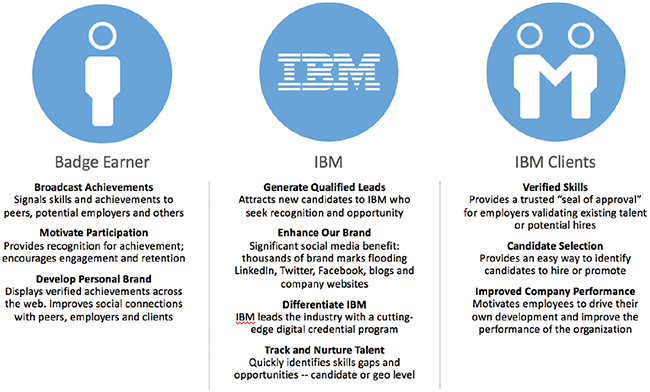
Figure 15-8. How IBM sees the Badge Earner, itself, and its clients.

Figure 15-9. IBM badges.
Within IBM, the PM profession has been one of the early adopters and has developed four badges (Figure 19–9) to recognize PM and program management skills and experience, based on the IBM PM career requirements. Each professional enters the PM profession at different capability levels depending on years of experience, skills, capabilities, and knowledge of PM. Qualification of a professional’s skills, capabilities, and expertise is completed through the validation process.
In 2016, the PM profession recognized all employees who have achieved one of those levels in their IBM career.
PM badges were very well received with a 95 percent positive comments on the recognition and a strong uptake in claiming badges.
This initiative has further motivated project managers to continue their professional careers at IBM. In addition, managers of project managers, who with the support of the PM/CoE, can recognize employees expertise and the badging program is another mechanism motivate employees to increase their skills and experience by following the Project
Knowledge Sharing
The PM Knowledge Network (PMKN) supports IBM’s becoming a project-based enterprise by leveraging knowledge through sharing and reusing assets (intellectual capital). The PMKN repository supports the PMKN Community with a wide range of assets that include templates, examples, case studies, forms, white papers, and presentations on all aspects of PM. Practitioners may browse, download, or reuse any of the more than 2716 entries to aid their projects, their proposals, or their understanding.
According to Orla Stefanazzi, PMP®, Communications Manager, the IBM PM CoE has driven a strong sense of community for its global PM professionals; this is a best practice among IBM’s professions.
Within IBM, a community is defined as a collection of professionals who share a particular interest, work within a knowledge domain, and participate in activities that are mutually beneficial to building and sustaining performance capabilities. Our community focuses on its members and creating opportunities for members to find meaning in their work, increase their knowledge and mastery of a subject area, and feel a sense of membership—that they have resources for getting help, information, and support in their work lives. Knowledge sharing and intellectual capital reuse are an important part of what a community enables but not the only focus. Communities provide value to the business by reducing attrition, reducing the speed of closing sales, and by stimulating innovation.
Communities are part of the organizational fabric but not defined or constrained by organizational boundaries. In fact, communities create a channel for knowledge to cross boundaries created by workflow, geographies, and time and in so doing strengthen the social fabric of the organization. They provide the means to move local know-how to collective information, and to disperse collective information back to local know-how. Membership is totally based on interest in a subject matter and is voluntary. A community is NOT limited by a practice, a knowledge network, or any other organizational construct.
The PM Knowledge Network (PMKN) Community is sponsored by the IBM PM/COE. Membership is open to all IBM employees with a professional career path or an interest in PM. The PMKN is a self-sustaining community of practice with over 40,000 members who come together for the overall enhancement of the profession. Members share knowledge and create PM intellectual capital. The PMKN offers an environment to share experiences and network with fellow project managers. Members receive communications relevant to the PM profession to enable them to deliver successful projects and programs in areas such as:
- Information on weekly PMKN eSharenet sessions. These sessions provide the global PM community with informal one-hour education on a range of topics that are aligned to IBM’s strategy (e.g., agile, benefits realization). These sessions are delivered by a range of internal and external speakers who are recognized subject matter experts in their field. The majority of these sessions enable IBM’s global project managers to claim 1 personal development unit (PDU) as part of the PMI recertification requirements.
- Project Management Community news items.
- Focused communications to assist the global PM community in developing their skills and PM career.
The global PM community is encouraged to be “socially eminent” by utilizing the forums to post questions and engage on PM topics of interest, creating blogs to share information and insights with other project managers, and being active community members.
Upon entering the PM community, professional hires into IBM are often asked the question: “What is the biggest cultural difference you have found in IBM compared to the other companies in which you have worked?” The most common answer is that their peers are extremely helpful and are willing to share information, resources and help with job assignments. The culture of IBM lends itself graciously to mentoring. As giveback is a requirement for certification, acting as a mentor to candidates pursuing certification not only meets a professional requirement but also contributes to the community.
To address communication requirements of the global PM community in IBM the primary channels include the PM/COE website and focused biweekly newsletters, as well as via the PMKN Community. Project management can even be added into a project manager’s corporate Web profile. However, as the PM profession grows so do the requirements for projects targeted at specific communities. The PM CoE has developed the following subcommunities (referred to as communities of practice (CoPs)) to provide focused information:
- Project managers who are new to the profession
- Managers of project managers
- Local geography PM communities
- Social PM
- IBM Program Work Center
- PM Office
- PM Method
- PM Maturity
- Agile @IBM
But IBM’s best practices are not just recognized within the company. Many have received recognition from industry sources. (See Figure 15-10.)
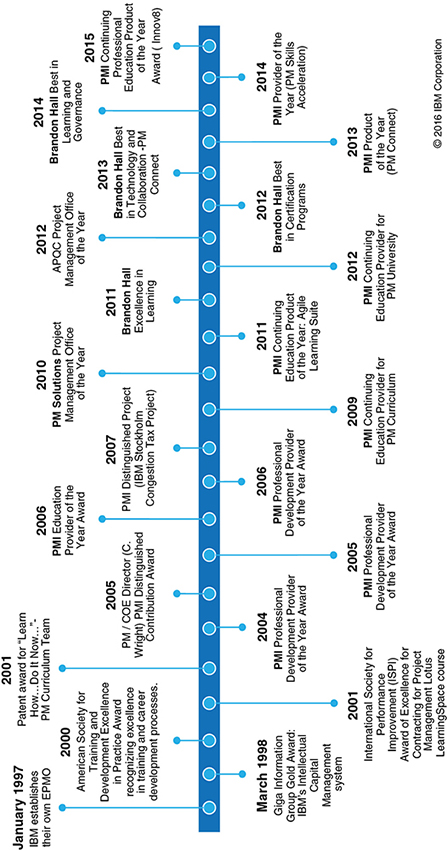
Figure 15-10. IBM best practices.
Challenges and Opportunities
As our transformation journey and the rate of change across industries continues, there are a number of fundamental questions we are asking ourselves in the PMCOE to ensure we maintain relevance and ensure our project managers continue to excel at what they do.
- How do we address the complexity questions posed earlier in this chapter?
- Do our methods, processes, and tools need to be customized to meet each of the complexity criteria, or can we deliver a one-size-fits-all solution to support out PM community?
- As complexity increases, how do we simplify the role of the project managers and allow them to focus on value-add activities?
- In an ever-challenging environment where resources are scarce and costs are under continuous focus, how do we automate more and eliminate redundant tasks?
The PMCOE is tacking these challenges. We know that one size does not fit all.
For example, agile is becoming more and more prevalent both in IBM and in the marketplace; however, it is not going to be a panacea solution for all projects. We need to help our project managers pick the right method for a particular project by continuing to provide solutions across a number of different methods and assisting them in choosing the appropriate method and approach.
Through targeted education and tailored solutions, we are addressing other complexity factors, such as industry, technology, and client-specific ones.
One example is a self-learning cognitive engine to sit on top of our knowledge repositories. Our project managers will have an interactive portal whereby they can search and locate the most relevant information to suit their requirement—text, video, and so on. This cognitive assistant will interpret the questions asked and answers provided to continuously enhance its capabilities, freeing up the project manager to focus on tasks that add business value.
Another example—we will deploy a predictive engine that will be able to inspect hundreds of project attributes and highlight “potential future trouble spots” based on thousands of data points from a vast database of previous projects.
15.2 CITIGROUP, INC.3
At Citi, we view project management (PM) as a critical area of strength in our ability to manage a global organization. To that end, we have cultivated a PM community to provide opportunities for practitioners to develop their knowledge and network across the company.
Many PM practitioners work in an environment in which much of their regular day is driven by a need to comply with top-down policies, standards, and procedures. Adherence to these and other requirements is compulsory for project completion and corporate compliance.
In the daily drive to comply with requirements, formal opportunities may not exist for these practitioners (project managers or others who are leading projects) to learn from others, share experiences, or deepen/round out their skill sets. In such intense environments, practitioners may not fully benefit from the talents and institutional knowledge that exist across the enterprise.
Building a Community of Practitioners
Personal leadership skills, and network building, are critical to project success.
PM and business analysis are two areas of practice in which natural opportunities exist to build robust communities of practitioners. The community is a place in which people with common roles, or who are performing similar tasks, can self-identify.
Being part of a community creates a sense of purpose, of being a part of something greater, and can create pride in one’s practice.
The community becomes the platform that can help to drive learning, collaboration and knowledge sharing. It provides opportunities for networking not only from within but also access to external sources. It can provide opportunities for skills development. It is a place where the many generations working in the organization or in similar roles can meet and share viewpoints. It is a vehicle to gather, guide, and possibly respond to the prevailing concerns of the group.
The Citi Program Management Council
The Citi Program Management Council (CPMC) was formed in support of the institutional practices of program management and PM at Citigroup, Inc. A chartered, global organization that spans the entire enterprise, the CPMC is accountable to the executive level of the company. The CPMC Executive Committee’s representation at the top of the house shows the organizational commitment of Citigroup to PM and program management.
PM is recognized as fundamental to the successful delivery of Citi’s work efforts.
The CPMC defines and sets PM policy and standards at Citi. Task forces, led by employees of Citi’s Global Program Management Office, execute the CPMC’s governance responsibilities.
The task forces include Project Management (PM) Governance and Standards, PM Data and Reporting, Enterprise Process Quality Assurance, PM Tools, and PM and Business Analysis (BA) Capabilities. These task forces are involved throughout Citi in multiple capacities each day, working with teams across the organization to manage activities vital to the growth and success of PM at Citi. They also ensure that our most vital programs and projects are managed in compliance with regulatory requirements.
Cultivating Community to Foster Success
PM is central to our business: It is practiced enterprise-wide. The CPMC drives PM to be a core competency in the organization, striving to promote a common language, understanding, and expectation.
The PM and BA Capabilities task forces are responsible for nurturing this competency in the organization. One way in which this is accomplished is by creating and fostering the communities for those practicing PM and related disciplines (such as BA).
Cultivating these communities and growing them in the organization enables us to develop a support and education network for our PM and BA resources, as well as those within the organization learning these competencies.
Citi’s networks of project managers and business analysts consist of employees throughout the firm, who are in PM or BA job families, or who have joined because of an interest in PM or BA.
Building PM as a competency, and overseeing these networks, are parts of the core mandate of the Capabilities task forces. They work together to create a holistic environment of connection and engagement, via a variety of means and media, including email, corporate social media, knowledge sharing, and support. Behind each connection is communications and engagement strategy.
Connecting the Community
We connect PM and BA groups to one another and to the organization through a variety of channels and media, as described next.
Social Media
Citigroup leverages a robust enterprise social media platform. The CPMC Capabilities task force uses that platform to engage the organization in collaborative learning and growth.
Sites maintained include a training center, network hubs for project managers and business analysts, and special event management sites.
The CPMC’s free knowledge-sharing sites, including the Citi PM community, are among the most visited in the organization. They are open to nearly all employees and contain information, discussions, and blogs.
Content
Communities thrive on fresh, relevant content. Good content can be shared by leadership and community participants. Content should be regular in frequency, relevant in topic and shareable in this trusted environment.
Here are some of the regular content items that Citi provides:
- PM Network News. A monthly email and online newsletter showcasing CPMC updates, articles on PM and program management, PM Network events, and training
- Targeted email notices. Email messages to specific training audiences when courses are available that meet their training interests or requirements
- Weekly open roles notices. Weekly email message and online posting highlighting job openings in project manager roles to support cross-pollination of talent across the enterprise
- Course information. Up-to-the-minute information on all PM/BA/Agile courses offered on behalf of the CPMC, links to registration, and full course catalogs with descriptions
- Blogs/discussions. Freely interactive platform where people can ask questions and discuss hot topics with anyone in the organization who accesses the community
- Skills assessments. Help trainees assess the appropriate level of training to take
Engagement
Active engagement is a measure of the health of your network. Beyond the items above as part of content, other opportunities to engage community members in shared experiences are important to the care of the community. Some of the engagement opportunities within the Citi community are discussed next.
Programs
- Annual CPMC Excellence Awards. Awards showcasing excellence in project/program management or BA practices and innovations.
- Mentor program. Facilitated by the Capabilities team, a more senior project manager or business analyst is paired with a junior project manager or business analyst; the mentor program creates an avenue for advice sharing, and often results in enduring professional relationships for employees who work on projects.
- Training Roadmaps (PM/BA). The roadmaps provide training and awareness opportunities across Citi to support maturity and acumen in the professional competencies.
- Badging to Increase Engagement. We are rolling out a program in 2017 that awards virtual corporate social media badges to PM Network members. Using a gamification approach, the campaign will help the CPMC to encourage participation and ownership in the drive towards common PM practices at Citi. Our PM practitioners will have the chance to earn badges for participating in custom training programs. In addition, the badges will recognize engagement in communities under the Citi PM umbrella, including participating in mentor programs and other PM community initiatives.
Community Events
- Project Management Awareness Week. CPMC sponsors an annual themed event consisting of virtual and in-person workshops around the globe with free PDUs available for attending sessions. Yearly videos are prepared with senior Citi leaders promoting the PM profession.
- Grows PM community and cements CPMC’s central role
- Networking, best practices, resources for building PM skills
- Targets project managers, business analysts, all interested
- International PM Day/Mini-PM Awareness Week. The CPMC warmly embraces International Project Management Day each November as a celebration to this practice. We also use the opportunity to revisit key topics from our PM Awareness Week held earlier in the year.
- Speaker series. Regular, rotating speaker series events on hot topics such as agile and PMP® exam changes
- Virtual Q&A sessions. Online, WebEx, or phone sessions answering questions about important topics in PM
- Community outreach. Support outreach efforts and foster relationships with key internal and external partner organizations
Conclusion: Care and Feeding of a Core Competency
The CPMC builds PM talent by building the PM community at Citi. We facilitate formal training, but we also provide numerous low- and no-cost options for project managers to improve their knowledge and their resources. We help PMP-certified project managers earn PDUs to maintain their certifications.
The key for us in building this core competency has been to supplement training with community building. By providing training and a community, we demonstrate to our project managers that they are part of a larger organization of practitioners within Citi. We enable project managers to learn the recognized methodologies through training—and to bolster their skills, their experience, and their networks through community.
We believe that as we grow and support this network, we expand the skills of our workforce, create opportunities for growth, and increase employee engagement. Ultimately, the CPMC’s Capabilities task forces not only help to grow the PM competency but to promote the PM profession.
15.3 MICROSOFT CORPORATION
There are training programs that discuss how to develop good methodologies. These programs focus on the use of “proven practices” in methodology development rather than on the use of a single methodology. Microsoft has developed a family of processes that embody the core principles of and proven practices in project management (PM). These processes combined with tools and balancing people are called Microsoft Solutions Framework (MSF).4 The remainder of this section presents just a brief summary of MSF. For more information and a deeper explanation of the topic, please refer to Microsoft Solutions Framework Essentials.5
MSF was created more than 20 years ago, when Microsoft recognized that IT was a key enabler to help businesses work in new ways. Historically, IT had a heritage of problems in delivering solutions. Recognizing this, MSF was created based on Microsoft’s experience in solution delivery.
MSF is more than just PM. MSF is about solutions delivery of which PM (aka governance) is a key component. Successful delivery is balancing solution construction with governance. According to Mike Turner:
At its foundation, MSF is about increasing awareness of the various elements and influences on successful solutions delivery—no one has a methodological silver bullet; it is next to impossible to provide best practice recipes to follow to ensure success in all projects…. MSF is about understanding your environment so you can create a methodology that enables a harmonious balance between managing projects and building solutions.
Another key point with regard to MSF is that project management is seen as a discipline that all must practice, not just the project managers. Everyone needs to be accountable and responsible to manage their own work (i.e., project manager of themselves)—that builds trust among the team (something very needed in projects with Agile-oriented project management), not so much with formally run projects (still very top-down project management).
The main point that MSF tries to get across is that customers and sponsors want solutions delivered—they frankly see project management as a necessary overhead. Everyone needs to understand how to govern themselves, their team and the work that the project does—not just the project managers.
Good frameworks focus on understanding of the need for flexibility. Flexibility is essential because the business environment continuously changes, and this in turn provides new challenges and opportunities. As an example, Microsoft recognizes that today’s business environment has the following characteristics:
- Accelerating rates of change in business and technology
- Shorter product cycles
- Diverse products and services
- New business models
- Rapidly changing requirements
- Legislation and corporate governance
- Growing consumer demand
- New competitive pressures
- Globalization
Typical challenges and opportunities include:
- Escalating business expectations
- Technology is seen as a key enabler in all areas of modern business.
- Increasing business impact of technology solutions
- Risks are higher than ever before.
- Maximizing the use of scarce resources
- Deliver solutions with smaller budgets and less time.
- Rapid technology solutions
- Many new opportunities, but they require new skills and effective teams to take advantage of them.
With an understanding of the business environment, challenges and opportunities, Microsoft created MSF.6 MSF is an adaptable framework comprising:
- Models (see Figure 15-11)
- Disciplines (see Figure 15-11)
- Foundation principles
- Mind-sets
- Proven practices
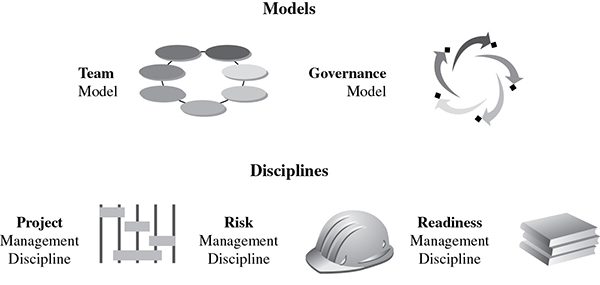
Figure 15-11. MSF models and disciplines.
Source: M. S. V. Turner, Microsoft Solutions Framework Essentials (Redmond, WA: Microsoft Press, 2006). All rights reserved.
MSF is used for successfully delivering solutions faster, requiring fewer people, and involving less risk while enabling higher-quality results. MSF offers guidance in how to organize people and projects to plan, build, and deploy successful technology solutions.
MSF foundation principles guide how the team should work together to deliver the solution. This includes:
- Foster open communications.
- Work toward a shared vision.
- Empower team members.
- Establish clear accountability, shared responsibility.
- Deliver incremental value.
- Stay agile, expect and adapt to change.
- Invest in quality.
- Learn from all experiences.
- Partner with customers.
MSF mind-sets orient the team members on how they should approach solution delivery. Included are:
- Foster a team of peers.
- Focus on business value.
- Keep a solution perspective.
- Take pride in workmanship.
- Learn continuously.
- Internalize qualities of service.
- Practice good citizenship.
- Deliver on your commitments.
With regard to proven practices, Microsoft continuously updates MSF to include current proven practices in solution delivery. All of the MSF courses use two important PM best practices. First, the courses are represented as a framework rather than as a rigid methodology. Frameworks are based on templates, checklists, forms, and guidelines rather than the more rigid policies and procedures. Inflexible processes are one of the root causes of project failure.
The second best practice is that MSF focuses heavily on a balance among people, process, and tools rather than only technology. Effective implementation of PM is a series of good processes with emphasis on people and their working relationships: namely, communication, cooperation, teamwork, and trust. Failure to communicate and work together is another root cause of project failure.
MSF focuses not only on capturing proven practices but also on capturing the right proven practices for the right people. Mike Turner states:
The main thing that I think sets MSF apart is that it seeks to set in place a commonsense, balanced approach to solutions delivery, where effective solutions delivery is an ever changing balance of people, processes and tools. The processes and tools need to be “right sized” for the aptitude and capabilities of the people doing the work. So often “industry best practices” are espoused to people who have little chance to realize the claimed benefits.
MSF espouses the importance of people and teamwork. This includes:
- A team is developed whose members relate to each other as equals.
- Each team member is provided with specific roles and responsibilities.
- The individual members are empowered in their roles.
- All members are held accountable for the success of their roles.
- The project manager strives for consensus-based decision making.
- The project manager gives all team members a stake in the success of the project.
The MSF team model is shown in Figure 15-12. The model defines the functional job categories or skill set required to complete project work as well as the roles and responsibilities of each team member. The team model focuses on a team of collaborating advocates rather than a strong reliance on the organizational structure.
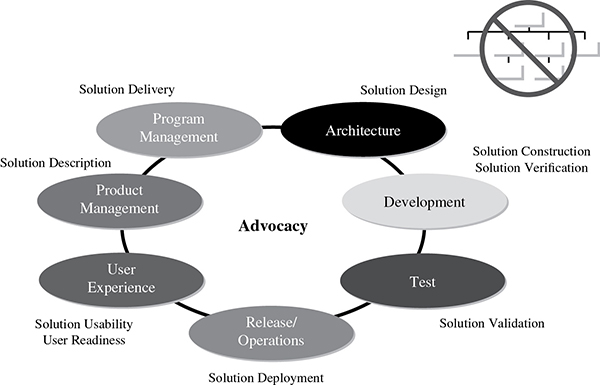
Figure 15-12. MSF team model
Source: M. S. V. Turner, Microsoft Solutions Framework Essentials (Redmond, WA: Microsoft Press). All rights reserved.
On some projects, there may be the necessity for a team of teams. This is illustrated in Figure 15-13.
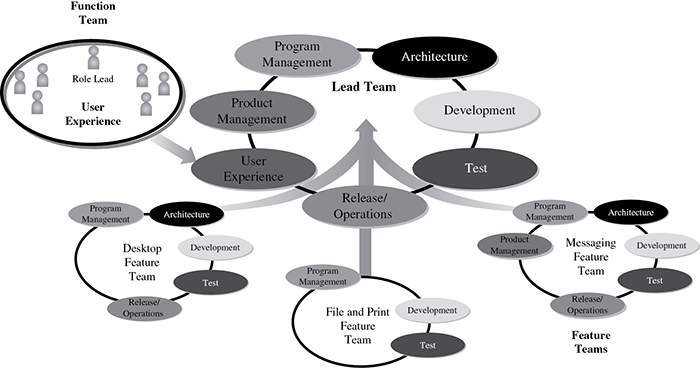
Figure 15-13. MSF team of teams.
Source: M. S. V. Turner, Microsoft Solutions Framework Essentials (Redmond, WA: Microsoft Press, 2006). All rights reserved.
Realistic milestones are established and serve as review and synchronization points. Milestones allow the team to evaluate progress and make midcourse corrections where the costs of the corrections are small. Milestones are used to plan and monitor progress as well as to schedule major deliverables. Using milestones benefits projects by:
- Helping to synchronize work elements
- Providing external visibility of progress
- Enabling midcourse corrections
- Focusing reviews on goals and deliverables
- Providing approval points for work being moved forward
There are two types of milestones on some programs: major and interim. Major milestones represent team and customer agreement to proceed from one phase to another. Interim milestones indicate progress within a phase and divide large efforts into workable segments.
For each of the major milestones and phases, Microsoft defines a specific goal and team focus. For example, the goal of the envisioning phase of a program might be to create a high-level review of the project’s goals, constraints, and solution. The team focus for this phase might be to:
- Identify the business problem or opportunity
- Identify the team skills required
- Gather the initial requirements
- Create the approach to solve the problem
- Define goals, assumptions, and constraints
- Establish a basis for review and change
MSF also establishes quality goals for each advocate. This is a necessity because there are natural “opposing” goals to help with quality checks and balances—that way realistic quality is built in the process and not as an afterthought. This is shown in Table 15-1.
TABLE 15-1 QUALITY GOALS AND MSF ADVOCATES
| MSF Advocate | Key Quality Goals |
| Product management | Satisfied stakeholders |
| Program management | Deliver solution within project constraints Coordinate optimization of project constraints |
| Architecture | Design solution within project constraints |
| Development | Build solution to specifications |
| Test | Approve solution for release ensuring all issues are identified and addressed |
| User experience | Maximize solution usability Enhance user effectiveness and readiness |
| Release/operations | Smooth deployment and transition to operations |
Source: M. S. V. Turner, Microsoft Solutions Framework Essentials (Redmond, WA: Microsoft Press). All rights reserved.
It is often said that many programs can go on forever. MSF encourages baselining documents as early as possible but freezing the documents as late as possible. As stated by Mike Turner:
The term “baselining” is a hard one to use without the background or definition. When a team, even if it is a team of one, is assigned work and they think they have successfully completed that work, the milestone/checkpoint status is called “Complete” (e.g., Test Plan Complete); whereas “Baseline” is used when the team that is assigned to verify the work agrees that the work is complete (e.g., Test Plan Baselined). After the Baseline milestone/checkpoint, there is no more planned work. At the point when the work is either shipped or placed under tight change control is when you declare it “Frozen”—meaning any changes must be made via the change control process. This is why you want to put off formal change management as late as possible because of the overhead involved.
This also requires a structured change control process combined with the use of versioned releases, as shown in Figure 15-14. What the arrows on the left mean is that as the solution is delivered, the solution completion increases, the knowledge of the solution space increases, and the overall risk to solution delivery goes down. The benefits of versioned releases include:
- Forcing closure on project issues
- Setting clear and motivational goals for all team members
- Effective management of uncertainty and change in project scope
- Encouraging continuous and incremental improvement
- Enabling shorter delivery time
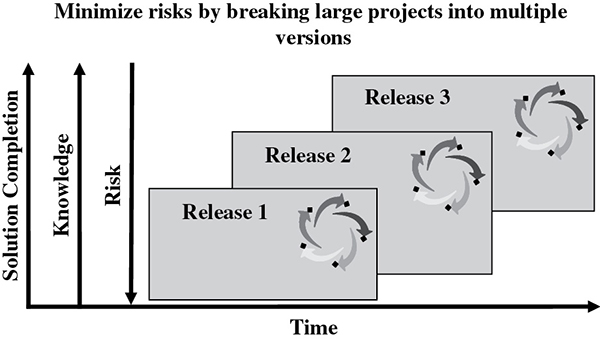
Figure 15-14. MSF iterative approach.
Source: M. S. V. Turner, Microsoft Solutions Framework Essentials (Redmond, WA: Microsoft Press). All rights reserved.
One of the strengths of MSF is the existence of templates to help create project deliverables in a timely manner. The templates provided by MSF can be custom-designed to fit the needs of a particular project or organization. Typical templates might include:
- Project schedule template
- Risk factor chart template
- Risk assessment matrix template
- Postmortem template
The MSF process for risk management is shown in Figure 15-15. Because of the importance of risk management today, it has become an important component of all PM training programs.

Figure 15-15. MSF risk management process.
Source: M. S. V. Turner, Microsoft Solutions Framework Essentials (Redmond, WA: Microsoft Press). All rights reserved.
MSF encourages all team members to manage risk, not just the project managers. The process is administered by the project manager.
- MSF Risk Management Discipline. A systematic, comprehensive, and flexible approach to handling risk proactively on many levels.
- MSF Risk Management Process. This includes six logical steps: identify, analyze, plan, track, control, and learn.
Some of the key points in the MSF risk approach include:
- Assess risk continuously.
- Manage risk intentionally—establish a process.
- Address root causes, not just symptoms.
- Risk is inherent in every aspect and at all levels of an endeavor.
There are numerous ways to handle risk, and MSF provides the team with various options. As an example, Figure 15-16 shows two approaches for risk prioritization.
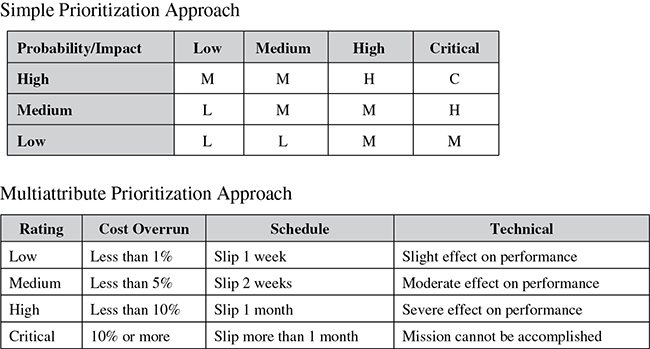
Figure 15-16. Risk prioritization example.
Source: M. S. V. Turner, Microsoft Solutions Framework Essentials (Redmond, WA: Microsoft Press, 2006). All rights reserved.
In Figure 15-11, we showed that MSF is structured around a team model and a governance model. The governance model is shown in Figure 15-17. This model appears on all of the MSF figures, illustrating that governance is continuously in place.
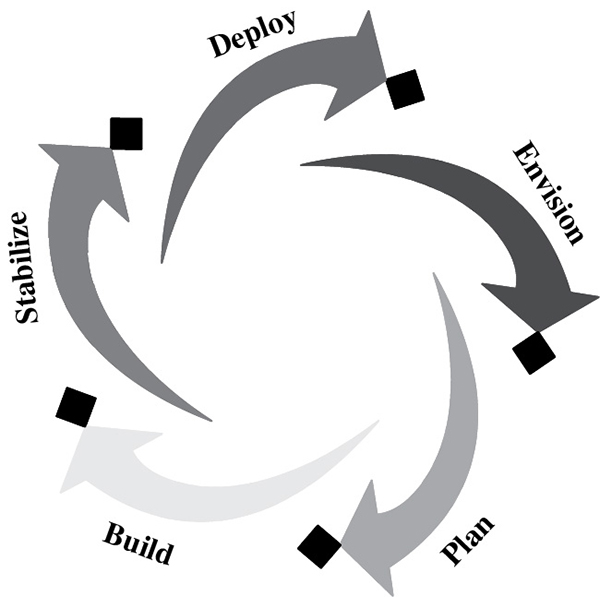
Figure 15-17. MSF governance model: enactment tracks.
Source: M. S. V. Turner, Microsoft Solutions Framework Essentials (Redmond, WA: Microsoft Press, 2006). All rights reserved.
There are two components to the MSF governance model: project governance and process enactment:
Project Governance
- Solution delivery process optimization
- Efficient and effective use of project resources
- Ensuring that the project team is and remains aligned with:
- External (strategic) objectives
- Project constraints
- Demand for oversight and regulation
- Process enactment
- Defining, building, and deploying a solution that meets stakeholders’ needs and expectations
The MSF governance model, as shown in Figure 15-17, is represented by five enactment tracks. Figures 15.18 through 15–22 provide a description of each of the enactment tracks.
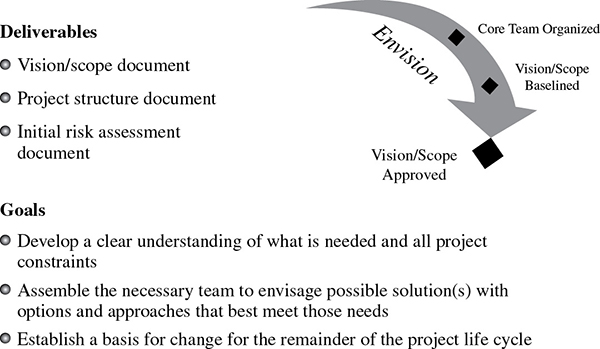
Figure 15-18. MSF envision track.
Source: M. S. V. Turner, Microsoft Solutions Framework Essentials (Redmond, WA: Microsoft Press). All rights reserved.
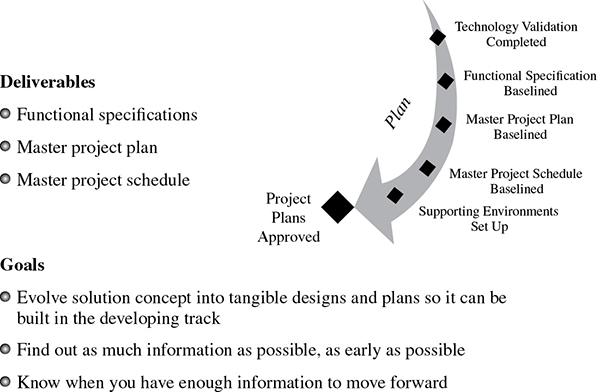
Figure 15-19. MSF plan track.
Source: M. S. V. Turner, Microsoft Solutions Framework Essentials (Redmond, WA: Microsoft Press). All rights reserved.
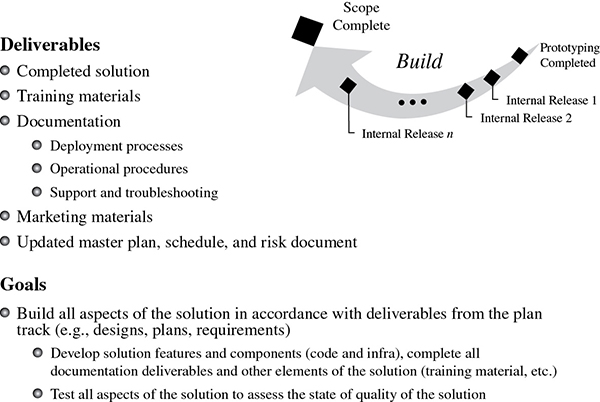
Figure 15-20. MSF build track.
Source: M. S. V. Turner, Microsoft Solutions Framework Essentials (Redmond, WA: Microsoft Press). All rights reserved.
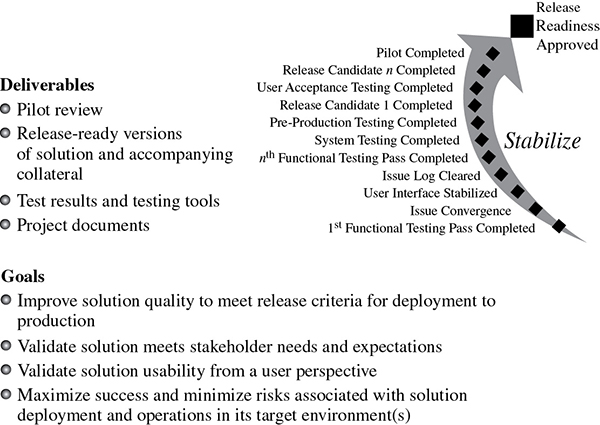
Figure 15-21. MSF stabilize track.
Source: M. S. V. Turner, Microsoft Solutions Framework Essentials (Redmond, WA: Microsoft Press). All rights reserved.
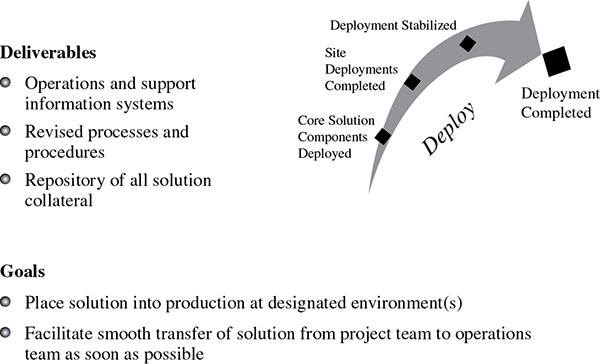
Figure 15-22. MSF deploy track.
Source: M. S. V. Turner, Microsoft Solutions Framework Essentials (Redmond, WA: Microsoft Press). All rights reserved.
MSF has established success criteria for each of the tracks, as described next.
Envision Track
- Agreement by the stakeholders and team has been obtained on:
- Motivation for the project
- Vision of the solution
- Scope of the solution
- Solution concept
- Project team and structure
- Constraints and goals have been identified.
- Initial risk assessment has been done.
- Change control and configuration management processes have been established.
- Formal approval has been given by the sponsors/and or key stakeholders.
Plan Track
- Agreement with stakeholders and team has been obtained on:
- Solution components to be delivered
- Key project checkpoint dates
- How the solution will be built
- Supporting environments have been constructed.
- Change control and configuration management processes are working smoothly.
- Risk assessments have been updated.
- All designs, plans, and schedules can be tracked back to their origins in the functional specifications and the functional specification can be tracked back to envisioning track deliverables.
- Sponsor(s) and/or key stakeholders have signed off.
Build Track
- All solutions are built and complete, meaning:
- There are no additional development of features or capabilities.
- Solution operates as specified.
- All that remains is to stabilize what has been built.
- All documentation is drafted.
Stabilize Track
- All elements are ready for release.
- Operations approval for release has been obtained.
- Business sign-off has been obtained.
Deploy Track
- Solution is completely deployed and operationally stable.
- All site owners signed off that their deployments were successful.
- Operations and support teams have assumed full responsibility and are fully capable of performing their duties.
- Operational and support processes and procedures as well as supporting systems are operationally stable.
MSF focuses on proactive planning rather than reactive planning. Agreements between the team and the various stakeholder groups early on in the project can make trade-offs easier, reduce schedule delays, and eliminate the need for a reduction in functionality to meet the project’s constraints. This is shown in Figure 15-23.
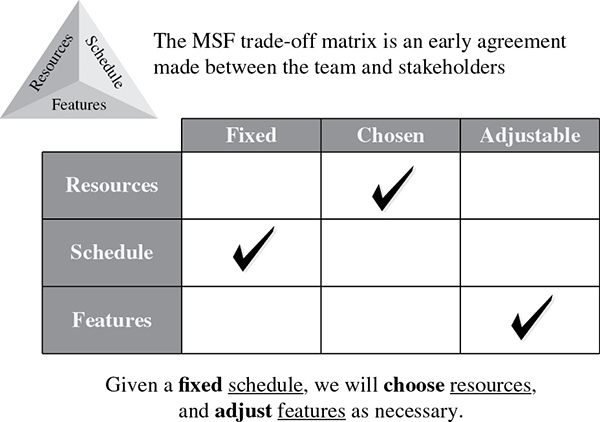
Figure 15-23. Project trade-off matrix.
Source: M. S. V. Turner, Microsoft Solutions Framework Essentials (Redmond, WA: Microsoft Press, 2006). All rights reserved.
15.4 DELOITTE: ENTERPRISE PROGRAM MANAGEMENT7
Introduction
Many organizations initiate more projects than they have the capacity to deliver. As a result, they typically have too much to do and not enough time or resources to do it. The intended benefits of many projects are frequently not realized, and the desired results are seldom fully achieved.
There are several factors that can make delivering predictable project results that much more difficult:
- Added complexity of the transformational nature of many projects
- Constant drive for improved efficiency and effectiveness
- Renewed pressures to demonstrate accountability and transparency
- Accelerating pace of change and constantly shifting priorities
Traditional methods of coordinating and managing projects are becoming ineffective and can lead to duplication of effort, omission of specific activities, or poor alignment and prioritization with business strategy. Making the right investment decisions, maximizing the use of available resources, and realizing the expected benefits to drive organizational value have never been more important.
This section explores Deloitte’s project portfolio management methods, techniques, approaches, and tools ranging from translating organizational strategy into an aligned set of programs and projects, to tracking the attainment of the expected value and results of undertaken transformational initiatives.
Enterprise Program Management
Organizations are facing increased pressures to “do more with less.” They need to balance rising expectations for improved quality, ease of access, and speed of delivery with renewed pressures to demonstrate effectiveness and cost efficiency. The traditional balance between managing the business (i.e., day-to-day operations) and transforming the business (i.e., projects and change initiatives) is shifting. For many organizations, the proportion of resources deployed on projects and programs has increased enormously in recent years. However, the development of organizational capabilities, structures, and processes to manage and control these investments continues to be a struggle.
Furthermore, there has been a significant increase in project interdependency and complexity. While many projects and programs likely were confined to a specific function or business area in the past, increasingly we see that there are strong systemic relationships between specific initiatives. Most issues do not exist in isolation and resolutions have links and knock-on impacts beyond the scope of one problem. Not only do projects increasingly span people, process, and technology, but they also cross functional, geographical, and often organizational boundaries. Without a structured approach to their deployment, projects and programs can fail to deliver the expected value. The need for strategic approach to project, program, and portfolio management is great.
Deloitte’s approach to project portfolio management is represented by the guiding Enterprise Program Management (EPM) framework that provides a model within which projects, programs and portfolios fit into a hierarchy where project execution and program delivery is aligned with enterprise strategy and can lead to improved realization of desired benefits. This approach aims to strike a balance between management of results (effectiveness) and management of resources (efficiency) to deliver enterprise value.
In Figure 15-24, Strategy includes the definition of the organization’s vision and mission, as well as the development of strategic goals, objectives and performance measures. The Portfolio Management capability translates the organization’s enterprise strategy into reality and manages the portfolio to determine effective program alignment, resource allocation, and benefits realization. Program Management focuses on structuring and coordinating individual projects into related sets to determine realization of value that may likely not have been attained by delivering each project independently in isolation. Disciplined Project Management helps enable that defined scope of work packages are delivered to the desired quality standards.
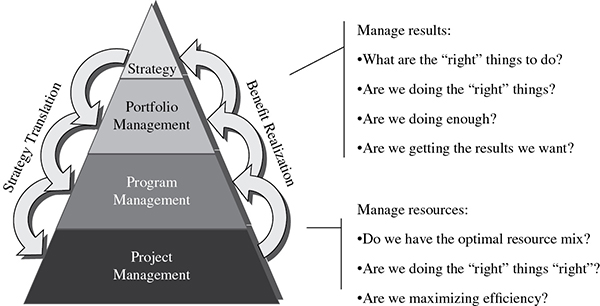
Figure 15-24. Deloitte Enterprise Program Management Framework.
Source: © Deloitte & Touche LLP and affiliated entities.
Strategy and Enterprise Value
Today’s business leaders live in a world of perpetual motion, running and improving their enterprises at the same time. Tough decisions need to be made every day—setting directions, allocating budgets, and launching new initiatives—all to improve organizational performance and, ultimately, create and provide value for stakeholders. It is easy to say stakeholder value is important, though it is much more difficult to make it influence the decisions that are made every day: where to spend time and resources, how best to get things done, and, ultimately, how to win in the competitive marketplace or in the public sector and effectively deliver a given mandate.
Supporting the Strategy component of the EPM framework, Deloitte’s Enterprise Value Map™ is designed to accelerate the connection between taking action and generating enterprise value. It facilitates the process of focusing on important areas, identifying practical ways to get things done, and determining if chosen initiatives provide their intended business value. The Enterprise Value Map™ can make this process easier by accelerating the identification of potential improvement initiatives and depicting how each can contribute to greater stakeholder value.
The Enterprise Value Map™, as illustrated at a summary level in Figure 15-25, is powerful and appealing because it strikes a very useful and practical balance between:
- Strategy and tactics
- What can be done and how it can be done
- The income statement and the balance sheet
- Organizational capability and operational execution
- Current performance and future performance
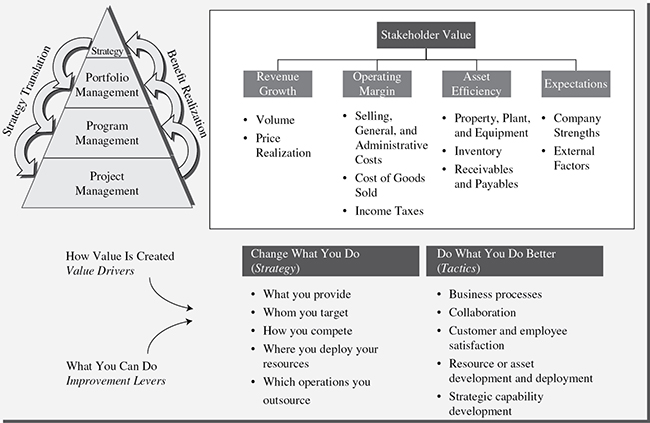
Figure 15-25. Deloitte Enterprise Value Map™ (EVM).
Source: © Deloitte & Touche LLP and affiliated entities.
Overall, the Enterprise Value Map™ helps organizations focus on the applicable things and serves as a graphic reminder of what they are doing and why. From an executive perspective, the Enterprise Value Map™ is a framework depicting the relationship between the metrics by which companies are evaluated and the means by which companies can improve those metrics. From a functional perspective, the Enterprise Value Map™ is a one-page summary of what companies do, why they do it, and how they can do it better. It serves as a powerful discussion framework because it can help companies focus on the issues that matter most to them.
The Enterprise Value Map™ is leveraged by Deloitte to help clients:
- Identify things that can be done to improve stakeholder value
- Add structure to the prioritization of potential improvement initiatives
- Evaluate and communicate the context and value of specific initiatives
- Provide insights regarding the organization’s current business performance
- Depict how portfolio of project and programs aligns with the drivers of value
- Identify pain points and potential improvement areas
- Depict past, current, and future initiatives
Stakeholder value is driven by four basic “value drivers”: revenue growth, operating margin, asset efficiency, and expectations:
- Revenue growth. Growth in the company’s “top line,” or payments received from customers in exchange for the company’s products and services.
- Operating margin. The portion of revenues that is left over after the costs of providing goods and services are subtracted. An important measure of operational efficiency.
- Asset efficiency. The value of assets used in running the business relative to its current level of revenues. An important measure of investment efficiency.
- Expectations. The confidence stakeholders and analysts have in the company’s ability to perform well in the future. An important measure of investor confidence.
There are literally thousands of actions companies can take to improve their stakeholder value performance, and the Enterprise Value Map™, in its full version, depicts several hundred of them. While the actions are quite diverse, the vast majority of them revolve around one of three objectives:
- Improve the effectiveness or efficiency of a business process
- Increase the productivity of a capital asset
- Develop or strengthen a company capability
The individual actions in the Value Map start to identify how a company can make those improvements. Broadly speaking, there are two basic approaches to improvement:
- Change what you do (change your strategy). These actions address strategic changes—altering competitive strategies, changing the products and services you provide and to whom, and changing the assignment of operational processes to internal and external teams.
- Do the things you do better (improve your tactics). These actions address tactical changes—assigning processes to different internal or external groups (or channels), redesigning core business processes, and improving the efficiency and effectiveness of the resources executing those processes.
Portfolio Management
Portfolio Management is a structured and disciplined approach to achieving strategic goals and objectives by choosing the most effective investments for the organization, and determining the realization of their combined benefits and value while requiring the use of available resources.
The Portfolio Management function provides the centralized oversight of one or more portfolios and involves identifying, selecting, prioritizing, assessing, authorizing, managing, and controlling projects, programs, and other related work to achieve specific strategic goals and objectives. Adoption of a strategic approach to Portfolio Management enables organizations to improve the link between strategy and execution. It helps them to set priorities, gauge their capacity to provide and monitor achievement of project outcomes to drive the creation and delivery of enterprise value.
Deloitte’s approach to Portfolio Management can enable an organization to link its strategic vision with its portfolio of initiatives and manage initiatives as they progress. It provides the critical link that translates strategy into operational achievements. As illustrated in Figure 15-26, the Portfolio Management Framework helps to answer these questions: “Are we doing the ‘right’ things?,” “Are we doing enough of the ‘right’ things?,” and “How well are we doing these things?”
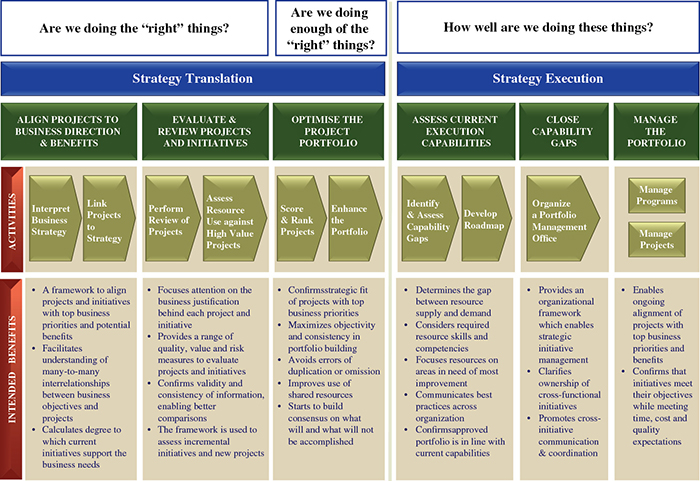
Figure 15-26. Deloitte Portfolio Management Framework.
Source: © Deloitte & Touche LLP and affiliated entities.
Once implemented, the framework helps to transform the business strategy into a coordinated portfolio of initiatives that work together to increase stakeholder value. Additionally, it can provide the tools and techniques to keep projects on track, greatly improving an organization’s chances of achieving the desired results. It focuses an organization on initiatives that offer high value-creation opportunities and can also provide a structure and discipline to drive performance improvement initiatives and aid in the identification of continuous improvement opportunities. Last, it confirms that the appropriate resources and budget are made available for critical assignments and provides the tools and techniques to effectively manage an organization’s portfolio of initiatives.
The first crucial step in the process of developing an effective project portfolio is the establishment of a method for determining which projects will be within and which will fall outside of the scope of the portfolio. A clear definition of what constitutes a “project” in needed, as well as identification of the criteria that will be applied to place a particular initiative inside or outside the boundaries of the portfolio. Daniel Martyniuk, a manager in Deloitte Consulting LLP’s Strategy & Operations practice that specializes in project portfolio management, highlights:
While this first step may seem basic insofar as its aim is to provide a basic framework in which to define, sort and categorize projects, the critical component is carefully capturing all projects that are currently undertaken or proposed for approval. Many hard-to-define projects are often missed, as they may take the form of day-to-day activities or may take place “out of sight.” As such, it is essential to define clear boundaries between day-to-day operations and project work; failure to do so may lead to ambiguity and inaccurate representation of the true count of projects in the organization.
A consistent categorization method, such as the Deloitte Investment Framework illustrated in Figure 15-27, helps to answer the question of “Why are we allocating resources to this project?” It aims to define the differences between initiatives allowing for immediate recognition and categorization of projects, and it provides the context for comparing projects that are different in nature or scope. It also facilitates allocation of resources by type first, followed by prioritization of projects within a type. Most important, it provides common ground to facilitate dialogue and prioritization discussions.
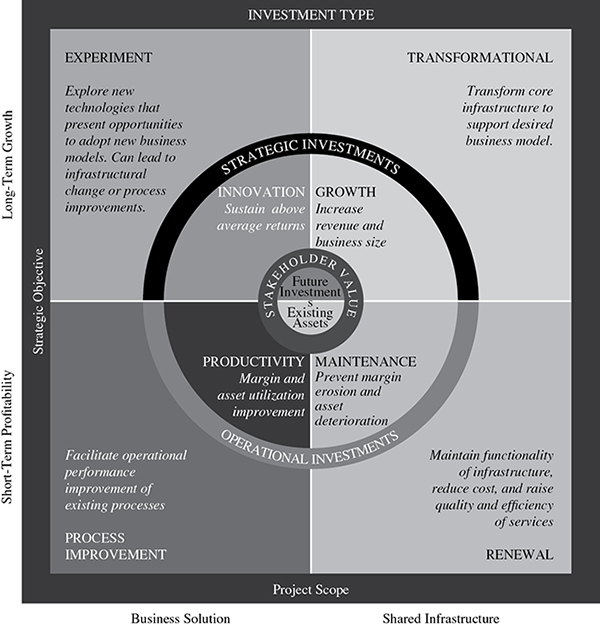
Figure 15-27. Deloitte Investment Framework.
Source: © Deloitte & Touche LLP and affiliated entities.
Once the scope of the portfolio has been set, the organization may require a disciplined process to enable continuous alignment of projects to strategic objectives, evaluation, prioritization, and authorization as well as the ongoing management of progress, changes, and realization of benefits.
The Deloitte Portfolio Management Process, as illustrated in Figure 15-28, can serve as a basis for the definition of common portfolio management sequence. It allows for coordination across projects to capitalize on synergies and reduce redundancies. It also helps to outline and identify projects in a comparable format when there are a multiple project opportunities and/or organizational pain points to increase the value created by the organization’s initiatives while balancing risk and reward.
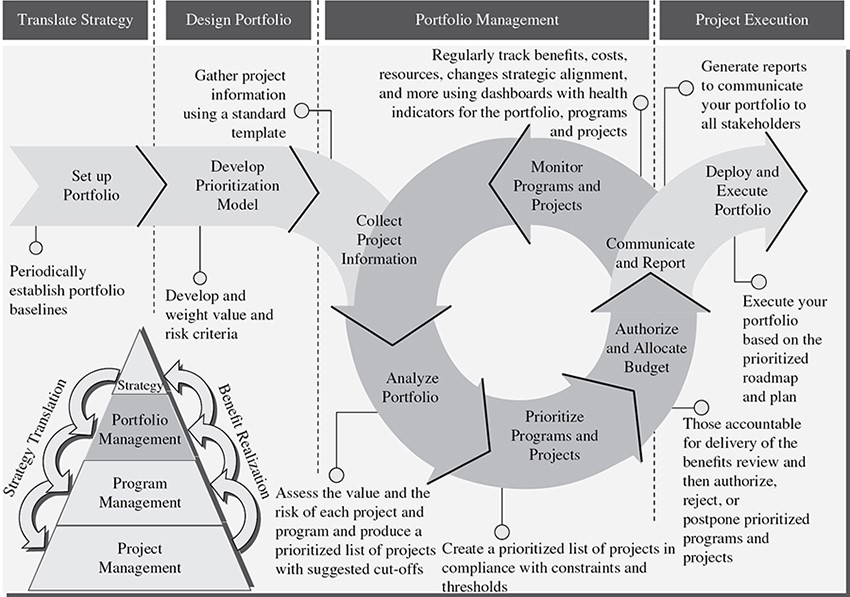
Figure 15-28. Deloitte Portfolio Management Process.
Source: © Deloitte & Touche LLP and affiliated entities.
When the approved list of projects making up the project portfolio is established, project registration and sequencing becomes the next critical step. Just because a project is now part of the “approved” project registry, it does not mean that it should or will be started right away.
A number of factors should be considered when determining the appropriate sequence for project execution. Some of the important decision criteria for project sequencing include:
- Strategic priority. The level of importance placed on this project by stakeholders or organizational leadership; fast track the start of those initiatives that directly contribute to the realization of the stated business objectives.
- Window of opportunity. Some initiatives need to be completed within a certain period of time in order to gain the desired benefits; give those initiatives the required consideration to help ensure that the opportunity to provide value is not missed.
- Project interdependencies. Confirm that all dependencies between related projects have been identified and considered when making project sequencing and initiation decisions; also, consider other dependencies that could impact the start or the completion of projects, such as timing of important decisions, budget cycle, and others.
- Resource availability. A project cannot be started until the applicable resources become available to begin working on that particular project; however, remember that “availability” is not a skill, and in addition to getting resources assigned to your projects, make sure that they are the “right” resources in terms of their knowledge, ability and experience.
- Risk. Consider the level of risk being taken on as a result of undertaking a given set of projects; it is a good idea not to initiate high-risk projects all at once, all within the same delivery period; high-risk projects should be closely monitored, and you should strive to find a applicable mix of high-risk and low-risk projects; whenever possible, you should consider staggering the execution of high-risk projects and conduct a full risk analysis to determine and agree on appropriate risk mitigation strategies.
- Change. Consider the novelty of the undertaking and the amount of change to be introduced into your organization as a result of implementing the proposed set of projects; confirm that your organization is ready to accept the amount and level of changes being created—there is only so much change that an organization can handle; stagger those projects that introduce significant changes and sequence them accordingly to limit change fatigue in your organization.
- Cost/Benefit. Different initiatives have varying costs/benefits associated with it; as with risk, it is imperative to understand which projects will provide the biggest benefits for the lowest cost; you don’t want to start all of your higher-cost projects at the same time, especially if you are not going to reap all of the benefits up front.
Essential to proper sequencing, and as a result appropriate portfolio balancing, is a sound understanding of the organization’s capacity to deliver as well as the capabilities of its resources. Organizations should know who is available to work on projects and what type of skills they have. It is often easy to determine how many people there are—so creating a resource inventory typically is not a problem. The challenge comes when trying to determine what the resources are currently working on and how much availability they have for project work or for additional projects, if they are already working on a project. One method available to get that correct picture is to do time tracking of project resources.
The expected long-term outcomes and the benefits of adopting a consistent Portfolio Management Framework and Process can include, but are not limited to, having the ability and capability to:
- Make conscious choices in selecting projects for implementation based on correct and up-to-date information, such as strategic alignment to business priorities, expected benefits, estimated costs, and identified risks.
- Determine capacity (i.e., the number of concurrent projects) for managing small, medium, and large projects to enable prioritization.
- Proactively manage risks associated with small to medium as well as large and complex transformation projects.
- Increase core competencies in PM across the organization and adopt a portfolio management approach to executive decision making.
- Streamline and standardize processes related to the management of single and of related, multiple projects and project portfolios.
- Maintain a current list of all projects, active and inactive; phase the initiation of projects to match capacity; and improve the delivery in accordance with requirements of approved projects.
- Maximize use of internal resources, and rationalize the use of external resources to supplement internal staff, with greater ability to facilitate value and efficient completion of the approved projects portfolio.
- Measure actual, real-time performance and track the realization of project and/or program benefits with the ability to identify actual progress made in the achievement of tangible outcomes and real results.
Program Management
In accordance with Project Management Institute’s (PMI’s) practice standards, a program is a group of related projects managed in a coordinated way to obtain benefits and controls not available from managing them individually. Programs may include elements of related work (e.g., ongoing operations) outside the scope of the discrete projects in a program. Some organizations refer to large projects as programs. If a large project is split into multiple related projects with explicit management of the benefits, then the effort becomes a program. Managing multiple projects via a program may enhance schedules across the program, provide incremental benefits, and enable staffing to be optimized in the context of the overall program’s circumstances.
As depicted in Figure 15-29, Deloitte’s approach to program management highlights four core responsibilities for the program management function: program integration, dependency awareness, standards adherence, and program reporting. The figure further illustrates additional primary and secondary activities that fall within the scope of work for this function.
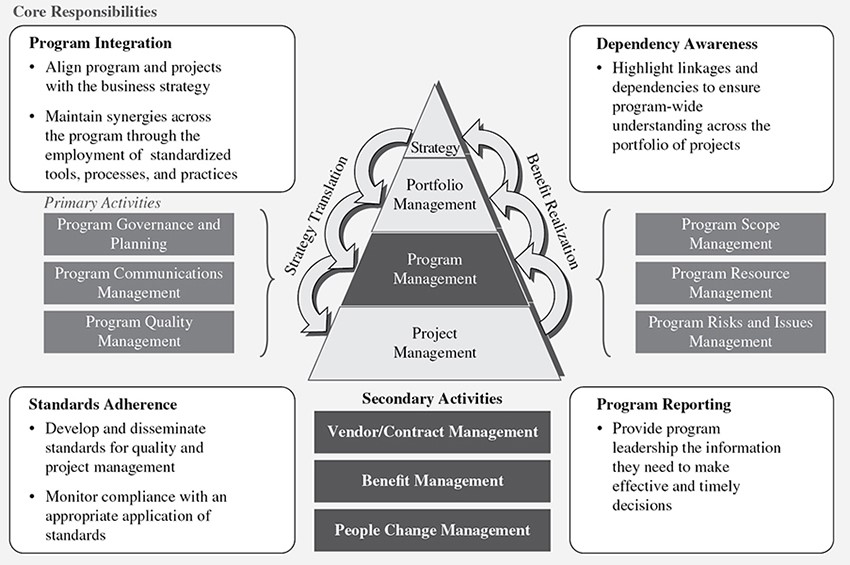
Figure 15-29. Deloitte Program Management Framework.
Source: © Deloitte & Touche LLP and affiliated entities.
While time, cost, and scope/quality are important performance measures at the individual project level, coordination, communication, and sequencing are the factors at the program level that help enable the desired results. This is because program management involves grouping and managing a series of projects in an integrated manner, and not just completing individual projects. In the end, good PM can help to deliver the program according to the planned scope. Good program management will also provide a better understanding of the linkages and dependencies between projects and programs across the overall projects portfolio.
Project Management
At the program level, consistency can breed desirable results. This operating rhythm allows for regular reporting and monitoring across multiple projects. At the project level, that consistency does not always make sense. Internal project variance can be a product of a number of factors:
- Type of project (e.g., strategy development, technology implementation, organizational change deployment, etc.)
- Geographical/organizational scope (e.g., single site, single country, global)
- Project implementation model (e.g., agile, waterfall, iterative, etc.)
- Project team size
These variances lead to different needs and constraints that impact some PM processes. The implication is that enterprise and program guidelines need to be standardized in some areas while retaining flexibility in others. This balance, when appropriately struck, can enable project managers to tailor processes in certain specific areas (e.g., status reporting, work planning) while still supporting minimum standards of performance overall.
Furthermore, other factors external to the project also drive variability and therefore should be considered. Some of these additional factors include:
- Industry
- Environment (e.g., public sector, regulated, commercial)
- Technology being implemented (e.g., cloud solution, enterprise resource planning, etc.)
Even with so many differentiating elements, a number of processes and guidelines will stay fixed regardless of which PM model is selected. This includes laws or regulations, organizational policies, company standards, project controls, and financial management processes/policies. (See Figure 15-30.)
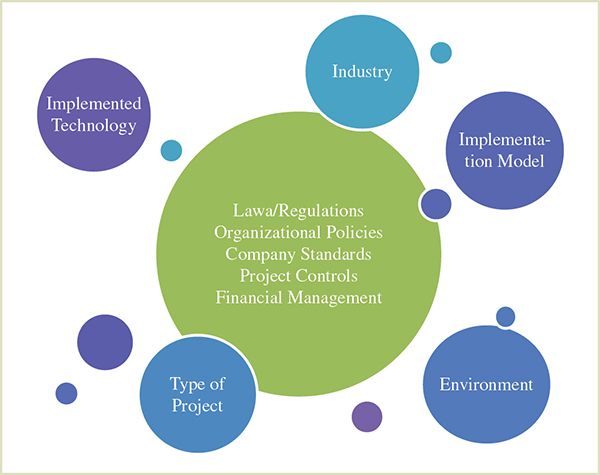
Figure 15-30. Comparison of fixed organizational factors versus variable factors.
Source: © Deloitte & Touche LLP and affiliated entities.
It is important that the organization understand where variability is required versus where standardization is required and effective. The objective is to make it easier for project teams to deliver solutions well, not to be dogmatic or overly theoretical, to help enable the placement of acceptable safeguards to identify and manage out-of-control situations proactively.
As each project is initiated, the particulars of the project are considered. The result is a tailored set of PM processes that align with enterprise and program standards while reflecting the specific nature of the project itself.
The Methodology
A holistic PM solution is concerned with the definition and delivery of specific work streams within an overall EPM framework. It includes standards, processes, templates, training, job aids, and tools. The more that these components can be standardized, the easier it can be to deploy them; teams understand the expectations, know the tools, and have lived the processes.
Enterprise Value Delivery (EVD) for PM is Deloitte’s method for delivering consistent PM solutions to our consulting clients. The method systematically addresses specific components of PM and is a common, standards-based approach supported by leading enabling tools, experienced coaching, and training. This method is scalable and flexible; it can be integrated into other Deloitte methods in whole or in part to address relevant PM issues. It incorporates standards while also allowing for individual projects to tailor the parts that make sense for their individual situation.
Designed to help Deloitte practitioners manage their projects, EVD for PM is:
- Scalable. It uses a modular design to increase its flexibility and can fit the majority of projects accounting for a variety of project sizes or scope.
- Deliverables-based. It allows for the iterative nature of PM processes.
- Prescriptive. It includes tools, detailed procedures, templates, and sample deliverables specific to the management of the project that help practitioners initiate, plan, execute, control, and close the project.
- Rich in information. It houses extensive information about method processes, work distribution, and deliverable creation.
- Based on experience. It allows practitioners to leverage reusable material developed through the vast industry experience and knowledge of our practice.
- Based on leading practices. It reflects Deloitte leading practices and industry research and experience, allowing Deloitte practitioners to share a common language worldwide.
- Practical. It provides realistic and useful information, focusing on what truly works.
Deloitte’s PM method content is aligned with the PMI’s Project Management Body of Knowledge (PMBOK® Guide) and SEI’s CMMI. Divided into two disciplines of work, PM and Quality Management, the method includes detailed task descriptions, step-by-step instructions, and considerations for task completion essential in delivering a PM solution. Multiple development aids including guidelines, procedures, and tools supplement each task.
A number of benefits can result from consistently applying the defined PM tasks and deliverables:
- Helps project managers see the big picture and accelerates work
- Provides a consistent approach and a common language
- Includes deliverable templates and tools
- Incorporates quality and risk management, making it easier to improve quality and reduce risk of project deliverables
- Can be used to manage programs as well as projects
The Tools
Deloitte has found that leveraging tools focused on enabling PM processes can help drive the adoption of sound PM processes within an organization. There are numerous tools available for organizations to use, and they all have their own sets of advantages and disadvantages. (See Figure 15-31.) Selecting the appropriate tool can help facilitate management consistency throughout the project, but it is important to differentiate between processes and tools. It is less important which tool is deployed, so long as a rigorous process discipline is retained. Having a ready-to-use and leading-edge tool available is extremely advantageous, but the balance is between flexibility (use the appropriate tool for the job) and standardization (regardless of the tool being used, you should do a prescribed set of tasks).
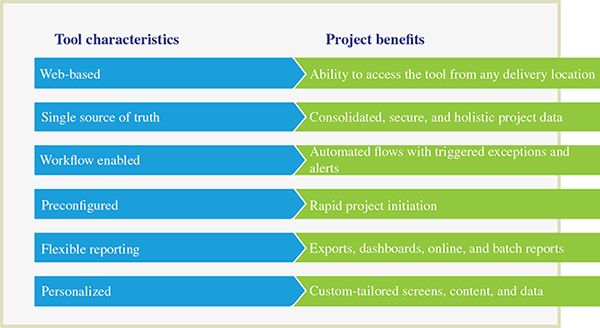
Figure 15-31. Deloitte PM tool characteristics.
Source: © Deloitte & Touche LLP and affiliated entities.
If an organization does not have a tool available to utilize, Deloitte has a solution that may benefit clients. The customized tool provides sophisticated features while being simplistic enough to deploy to a project team quickly. Security is provided in a multitenant environment and practitioners are trained on the tool prior to engaging on a project.
“Agile” PM
Deloitte’s EVD solution establishes a foundation for performing common PM tasks while providing the flexibility to tailor processes to address known variability by:
- Defining typical usage models for frequent solution scenarios that incorporate the full spectrum of solution components (documentation, training, samples, etc.)
- Providing guidelines to enable projects to leverage the appropriate processes for the specific project circumstances
- Allowing flexibility to define an appropriate governance structure to support the specific risk/cost profile for the project
Emerging market conditions have also driven the need to evaluate standard PM processes especially in an “agile” environment. Agile approaches are typically used in projects where requirements are unclear or subject to frequent change, and/or where frequent delivery of solution components with the greater value is required. Projects leveraging an agile methodology perform certain PM processes in a manner similar to projects using waterfall or iterative approaches (e.g., risk and issue management, financial management, and some aspects of status reporting), while others are performed in a very different manner. EVD provides guidance for project managers from both perspectives. Furthermore, for those aspects that are different, it prescribes how they can be approached using techniques that are specific to agile.
Specifically, scope management and work planning and tracking in agile is significantly different than in projects using a waterfall or iterative methodology. EVD for Agile describes how projects develop and manage the product and sprint backlogs and includes guidelines for documentation of user stories that are sufficiently granular to be addressed within a single sprint. It describes the metrics analysis (using velocity, capacity, and burnup/down) that project teams use to size sprints and user stories and to forecast delivery of components, and includes the productivity reports that are used to monitor progress. The important factor is to retain sufficient PM discipline, even if the techniques for managing the work are dramatically different. To summarize, although agile may be vastly different in how a project is executed, basic PM functions still exist, and Deloitte has identified a way to utilize both.
The Project Team
Even with the most intricate method and set of tools, without a dedicated and trained project team, the project can still falter. Resources with significant PM or program management experience typically function at the Program Management level while resources with limited to no project experience can be found at the project level. With that said, having a PM approach that takes the experience level of the resources into account is essential.
To make resources effective throughout the project, there are a few things to consider in tailoring your PM deployment (as shown in Figure 15-32).
- Understand the internal change management implications. Change management processes can be more rigid in some places than others. The project team must be aware of what circumstances to go through the change management process and what information is required at what times. This is critical in ensuring that changes get routed correctly and efficiently. Having to review every change request for accuracy slows down the project and can have an unanticipated adverse effect on project timelines.
- Start basic activities early. Recognize that while the enterprise and program management layers are typically staffed by dedicated, full-time PM professionals, project teams typically include operational resources who have little to no actual project experience. Make sure the project team knows what is expected from them and knows the basics. Examples include:
- How often am I reporting status?
- What is the overall project timeline?
- Where can I find scope documentation for this project?
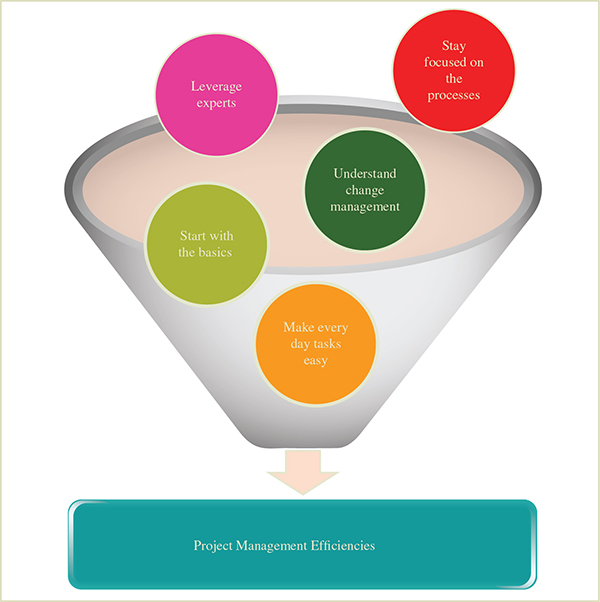
Figure 15-32. Key factors for PM deployment.
Source: © Deloitte & Touche LLP and affiliated entities.
Performing a project kick-off and implementing appropriate process rigor early are instrumental in introducing the team to the specific dynamics of that project. This is when the overall timeline, PM protocols, and roles and responsibilities, among other topics, are presented. At this time, the project team can also start other planning activities including template identification or development.
- Make it easy to do the simple things well. For everyday tasks, like storing updated deliverables, recording time or status, or updating the work plan, the effort should be minimal regardless of the level of experience. These activities should not cause additional overhead to the project. The more time taken to perform simple things, the less productive time there is for the substantial design or build work on a project.
- Leverage specialists when more advanced PM activities are required. Certain activities of PM do require significantly more skill and should not be handled by a project novice. These areas center frequently on work planning efforts. Work planning activities occur throughout the project and require a deep understanding of managing dependencies, identifying critical path items, and performing meticulous resource allocation. The activities shown in Figure 15-33 are focused only on the initial development of the work plan. Resources also need to understand what adjustments are required to the work plan as changes occur either to scope or resources.
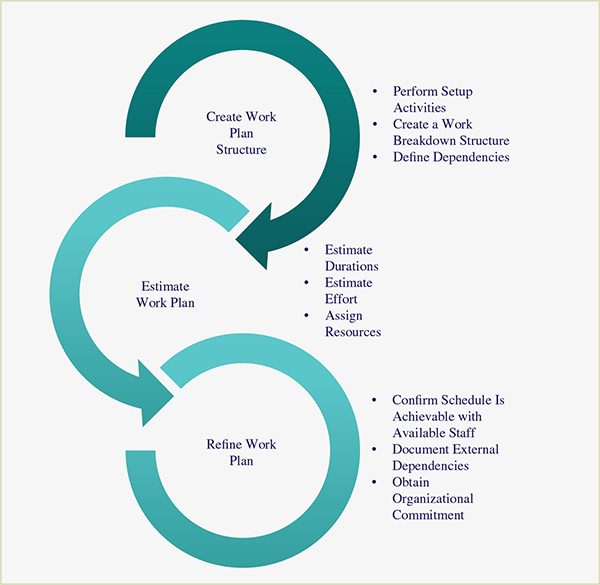
Figure 15-33. Activities required to develop a work plan.
Source: © Deloitte & Touche LLP and affiliated entities.
- Maintain focus on defined PM processes when things get precarious. As changes occur throughout the project, sometimes it feels like the project can get out of control. One of the ways to avoid this is to uphold the PM processes that were approved at project initiation. A solid PM discipline enables the project manager to pull the project out of whatever uncertain situations may arise. If managed diligently, the process can determine the overall effect to a project’s scope, timeline, resources, or budget. It is critical to maintain the discipline when things are starting to go awry—just when the average person says “I don’t have time for that” is when it becomes more critical.
Excellent PM is a result of a clear understanding of the project context. Deployment of standardized processes and tools can make things easier, but only if balanced to reflect the variations of each particular project. Once this balance is determined, it’s primarily a matter of blocking and tackling. Communicate expectations and establish disciplines early, so that it becomes second nature. This allows the project team to focus creative energies on building the best solution, which is, after all, why there is a project in the first place.
Leadership and Governance
Additional factors influence an organization’s ability to generate value and deliver transformation results that go beyond having the right project and the right PM and portfolio management processes or templates. According to Daniel Martyniuk:
The importance of proper governance, leadership and accountability cannot be underestimated. In my experience implementing project portfolio management, having the right framework to guide project stakeholders through the myriad of decisions that needs to be made on a constant basis is a critical differentiating factor between a project’s success or failure.
The main purpose of governance is to specify decision rights, clarify accountabilities, and encourage desirable behaviors. Governance is about bringing the appropriate individuals to the table to have the desired conversation under the relevant process to make the preferred decisions given available information. Governance frameworks depict the structures and processes by which decisions are made, and they define sets of principles and practices for managing:
- What decisions need to be made
- Who has the authority and accountability for making decisions, and with whose input, and
- How decisions get implemented, monitored, measured, and controlled
As illustrated in Figure 15-34, effective governance requires strong executive sponsorship, clear “business” ownership, and sound technical advisory to facilitate compliance with established regulations, standards, and guidelines. It also requires some type of benefit and value oversight. This can be done through a committee of select stakeholders who understand the qualitative aspects of a project’s value. Most important, each function of the chosen governance framework should be empowered with the required decision-making authority within their area of responsibility.
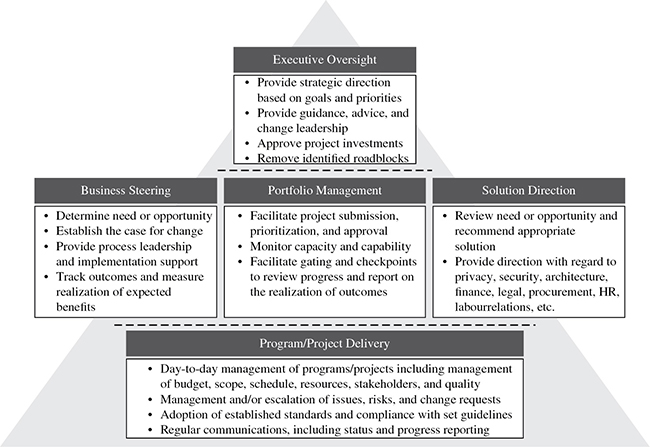
Figure 15-34. Deloitte Project Portfolio Governance Framework
Source: © Deloitte & Touche LLP and affiliated entities.
People and Organizational Change Management
Last, but most important, it is people who are the critical element to achieving project and transformation objectives. They are also a leading cause of transformation results falling short. Integrated people and organizational change management, human resources, and learning services should be delivered across the portfolio at the program and project levels to drive consistency, alignment, and effective delivery across the overall transformation effort.
Illustrated in Figure 15-35, the Deloitte People Dimension of Transformation is a broad framework that aligns with the business strategy and can address everything from risk assessment and leadership alignment to behavioral change, communication, training, organizational design, and more.
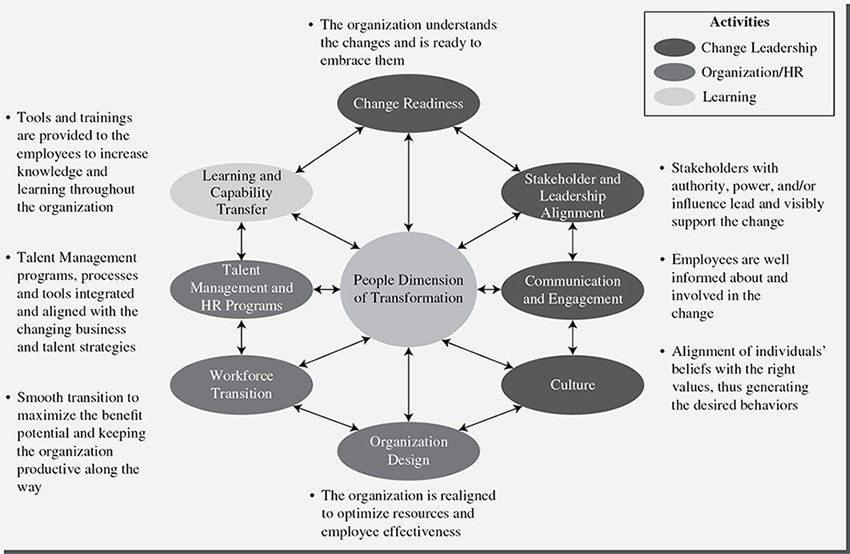
Figure 15-35. Deloitte People Dimension of Transformation framework.
Source: © Deloitte & Touche LLP and affiliated entities.
One of the major causes of a transformation not achieving its desired objectives is the stakeholders’ inability to see and feel the compelling reason for the change. As a result, fear, anger, or complacency can take root and cause resistance. In cases where change is more effective, individuals have a sense of passion. Create compelling, eye-catching, and dramatic situations to help people see and visualize problems, solutions, or progress in addressing complacency, lack of empowerment, or other important issues.
Sustained transformation also requires deep, personal commitment at every level of the organization. Some stakeholders will be co-creators who help shape the transformation vision and plans. Some will be interpreters. Other stakeholders will be consumers of the transformation. Effective transformation requires contributions and involvement from all types of players. Alignment and internal commitment start at the top—leaders should be aligned, willing to seek out resistance, and committed to leading the transformation by example.
Transformation projects usually alter structures, work processes, systems, relationships, leadership styles, and behaviors that together create what we know as organizational culture. Creating the culture the organization wants—or preserving the one it already has—may require a deliberate program that aligns with other transformation activities. Without a conscious effort, it is easy to end up with an organization stuck in between new ways of working and old modes of behavior.
To enhance the investment in new business models, technologies, and processes, a formal and deliberate program of education and skills development for the people affected by the transformation is essential. Yet education and training are usually near the bottom of the transformation to-do list.
Select keys to effectively approaching people and organizational change management on transformation projects include those listed next.
- Get your stakeholders correct. Understand how the transformation can affect each stakeholder group as well as specific individuals.
- Anticipate risks. Identify pockets of resistance before they surface, along with potential business disruptions and risks that might arise.
- Assess the situation. Determine whether the magnitude and pace of change is energizing or paralyzing the organization.
- Set priorities. Prioritize activities, tackling the critical barriers first.
- Influence the influencers. Identify people within each stakeholder group who command respect, and then get them involved as champions for the transformation.
- Strive for real commitment. Understand people’s circumstances and aspirations—and then make a concerted effort to accommodate them.
- Equip leaders to drive transformation. Equip leaders with the knowledge and skills needed to help their people get through this challenging and often traumatic period. Make leaders the role models for the desired behavior.
- Recognize there may be winners and losers. The impact of transformation varies from one stakeholder group to the next, and some may not be happy with the outcome. Understand, engage, and inform all stakeholders.
- Focus on the things that really matter. An effective culture is one that creates sustainable business value, differentiates the organization from its competitors, supports the specific requirements of the industry, and helps customers get what they really want.
- Be consistent. Things that drive behavior and culture should align with one another. Misalignment simply confuses people.
- Reinforce. Align people-related initiatives—particularly rewards and incentives—to help foster the new culture. Establish effective leadership models, and introduce new words and vocabulary that highlight the desired behavior.
- Retain select staff. Identify top performers and other select staff who are critical to the organization’s future results. Let them know they are not at risk.
- Capture knowledge. Establish formal processes and systems to transfer and capture organizational knowledge—particularly for sourcing transformations.
- Be kind but confident. Decision makers should be gentle but not show doubts that decisions were required, appropriate, and final.
Conclusion
The adoption and consistent application of standard project, program, and portfolio management frameworks, as well as the implementation of the relevant governance along with effective people and organizational change management techniques, can lead the organization to the realization of a number of benefits, including:
- Improved executive decision making. Enhanced ability to determine which projects to continue/stop, based on correct, up-to-date project status/progress information
- Financial transparency and accountability. Improved ability to manage budget under- and overruns and to shift funds within the portfolio to better manage and respond to unforeseen circumstances and changes in priorities
- Enhanced resource capacity management. Availability of needed information and data to make effective use of available resources and ability to shift resources within the portfolio to enhance resource utilization across projects
- Proactive issues and risk management. Ability to foresee and respond to challenges before they escalate into major problems; a mechanism for bringing select issue resolution or risk mitigation decision/action requirements to the attention of the executives
- Standardization and consistency. Apples-to-apples comparison between projects; improved and more timely internal and external communications with staff, clients, executives, and other stakeholders.
- Increased collaboration and better results. Enhanced realization of benefits through the joint management of initiatives as an integrated portfolio; cooperation and improved removal of roadblocks to results.
Although not exhaustive, the topics addressed here outline selected critical factors to achieve the desired results that, based on our practical experience, can guide an organization in the “right” direction as it embarks on the road to implement sustained project portfolio management capability to deliver real, tangible enterprise value.
15.5 COMAU8
In the second edition of Strategic Planning for Project Management Using a Project Management Maturity Model, I stated that the path to maturity can be accelerated with (1) the implementation of a PMO early on in the process, (2) having the PMO report directly to the executive levels of the company, and (3) having visible executive-level support for project management (PM). Companies that accomplish all three of these items seem to outperform their competitors with regard to PM. Such was the case with Comau.
* * *
Comau is a worldwide leader in manufacturing flexible, automatic systems and integrating products, processes, and services that increase efficiency while lowering overall costs. With an international network that spans 13 countries, Comau uses the latest technology and processes to deliver advanced turnkey systems and consistently exceed the expectations of its customers. Comau specializes in body welding, powertrain machining and assembly, robotics and maintenance, as well as environmental services for a wide range of industrial sectors. The continuous expansion and improvement of its product range enables Comau to guarantee customized assistance at all phases of a project—from design, implementation, and installation, to production start-up and maintenance services. Comau core competences are spot, laser, and arc welding; sealing; drilling and riveting; machining; assembly and test; monitoring and control; handling and logistics; maintenance services; energy efficiency consultancy; and PM services.
Description of the Problem
During the 1980s, Comau’s success began to flourish. As with most successful companies, Comau recognized the opportunities that could come from acquisitions. In the 1990s, Comau started pursuing a strategy of global acquisitions. The problems with managing the acquired companies soon became apparent because each had a different level of maturity in terms of PM, and there were no corporate standards for PM. Until a few years ago, PM in Comau was typically executed in a very fragmented way. There was a general lack of culture, methodologies, processes, and guidelines surrounding the PM process. By 2007, there was an urgent need to implement an efficient and global approach. The goal was simple: to integrate PM knowledge across the entire global company in order to give Comau a powerful competitive advantage.
The Solution—“From a Cluster to an Effective Network …”
In 2007, Comau decided to reinforce the PM culture by establishing the Contract and Project Management corporate function. As with most companies that understand the importance of PM and recognize the need for executive leadership in PM, the new organization was headed by a vice president for contract and PM. The main guidelines for the organization’s mission included:
- Company organizational development and the implementation of global organizational policies related to PM
- Reinforcement of the corporate PM policy and Project Management Office (PMO) structure
- Creation of Comau Project Management Academy—the continuous development of knowledge of both hard and soft skills
Comau correctly recognized the importance of the PMO in achieving this mission. Unlike less mature companies, Comau viewed itself as a solution provider whose goal was satisfying the business needs of its global customers. The Contract and Project Management Office was therefore considered as an internal business solutions provider.
Comau approached the three main guidelines as described next.
Company Development and Implementation of the Organizational Policies
During 2007, a global PM policy was developed together with an intensive training program based on the PMBOK® Guide. Project management benchmarks were established to measure the company’s maturity level, and an action plan was created to continuously improve the maturity process. The global policy, which would be applied across the entire Comau global enterprise, was a PM policy describing the tasks that all the project teams must perform. The policy was directly connected to PMI’s PMBOK® Guide best practices. It should be noted that the company decided to integrate contract management and PM into a single unit. Comau was convinced this was an important innovation and that it would produce positive results for the company at large.
Reinforcement of the Corporate PM Policy and PMO Structure
Today the Comau PMO portfolio consists of a multimillion-euro revenue group covering global automotive commercial vehicle, renewable energy, and aerospace projects carried out in more than 30 countries. The Comau PMO coordinates the efforts of each of the regional PMOs: PMO North America, PMO South America, PMO Europe, and PMO Asia. To better follow the business in operations, Contact Management was entitled to the Sales and Proposal Teams, supported by dedicated people from the legal department. The Comau global organization is shown in Figure 15-36.
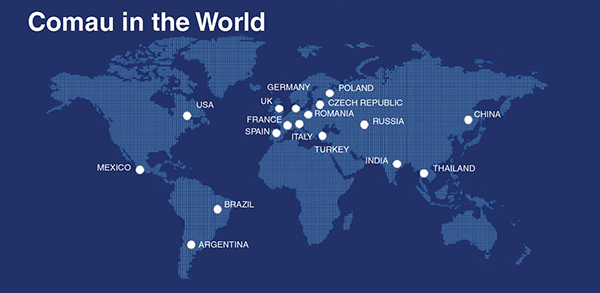
Figure 15-36. Comau worldwide.
The Project Management team, international experts in project, program, and portfolio management, is included as part of the Project Management Family and is composed of project managers, program managers, project planners, and dedicated team members from company functions. The missions of the Comau PMO are shown in Figure 15-37.

Figure 15-37. Comau PMO missions.
Creation of the Comau Project Management Academy
In 2007, we established a specific organizational entity aimed at developing culture and skills in PM: the Comau PM Family, which is the community of Comau PM Professionals. We also understood that it would be effective to have a structure with the specific responsibility to enhance this community. Thus, the Project Management Academy was launched.
Since the beginning, the PM Academy objectives have been to:
- Spread PM knowledge and culture throughout the company
- Analyze the training needs of Comau organizations
- Design specific training activities for our professionals in PM
- Organize initiatives (conferences, workshops, etc.) to foster the dissemination of PM know-how
To support Comau’s mission, the PMO first prepared a high-level roadmap for 2007 to 2009 that included the following:
2007
- Perform benchmarking and maturity baselining.
- Define the concept of the PMO.
- Develop operational policies for PM.
- Develop PM training programs.
2008
- Establish a corporate PMO.
- Establish regional PMOs.
- Implement innovation actions according to the maturity assessment.
- Establish the Project Management Academy as a PMI® Registered Education Provider.
2009
- Manage ongoing activities for projects, programs, and projects portfolio.
- Perform external benchmarking on PM maturity.
- Expand the activities of the Project Management Academy.
- Manage selected strategic and special projects.
As stated previously, Comau viewed the PMO as the primary mechanism for providing internal business solutions. Some of the benefits achieved by Comau included:
- Customer recognition as the number one integrator of complex work, thus adding value to the value/supply chain.
- Development of a high-standard, international class-compliant PM culture and approach
- Better support for the sales team resulting in increased project success through proactive project planning and risk reduction strategies.
- Development of a culture capable of synchronizing language with Comau customers, reducing misunderstandings within project definitions and executions, and supporting trust-oriented communications throughout the projects.
- Development of one of the best workload optimization techniques capable of reducing costs for customers.
- Development of a shared technical language when working to standardize a global approach (e.g., WBS Powertrain Italy and France). This enables Comau to exchange parts between products and project teams in different countries, thereby achieving better planning, execution, cost control, and workload planning and more balanced risk management, communications, and quality.
- Identification and the management of out-of-project-scope situations, which results in better benefits for customers, Comau, and providers.
- Optimization of processes and reporting systems, which reduces wasted time and creates more time for managing critical issues.
- Contribution to the company-wide integration of work and processes, sharing information, visions, and strategies, which includes the start-up of strategic projects.
- Creation a strong team of high-skilled managers, a real professional Community of Project Managers, capable of supporting difficult projects and high-pressure situations.
The corporate PMO business model is shown in Figure 15-38.

Figure 15-38. Comau PMO business model.
Comau PMO is actively managing the global portfolio of projects, reporting to the CEO and working to achieve the highest degree of alignment between PM and business strategy by means of business intelligence and dedicated key performance indicators (KPIs), as shown in Figure 15-39.
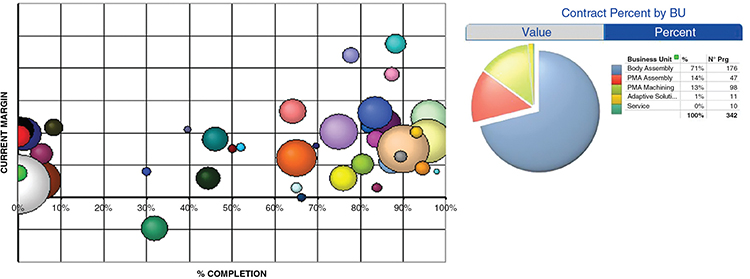
Figure 15-39. Comau portfolio management.
The PMO team has become the change agent inside each of Comau’s organizational business units. The result has been several quick-win solutions. Comau has been able to get better control of its indirect costs while providing value-added opportunities for both the company and its global customer base. All managers are now delegating authority to a greater extent than in the past, and vice presidents and regional managers are functioning as strong project sponsors.
A second high-level roadmap has been developed for 2010 to 2016 including the following objectives:
2010–2013
- Develop at a worldwide level the concept of the contract management.
- Increase portfolio management.
- Develop PM training programs for external customers.
- Develop the concept of risk management at worldwide level.
- Develop global portfolio management rules and methodologies.
2013–2016
- Develop global PM process.
- Harmonize and assimilate a project/risk management common language in Comau worldwide.
- Develop a risk management global culture.
- Develop PM processes for the asset management business.
- Creation of an organization to manage company strategic initiatives.
- Develop a program to improve customer site management efficiency.
- Develop a program to improve project timing management across different functional roles in the PM team.
Figure 15-40 shows the current global structure of the PMO from the geographical point of view.
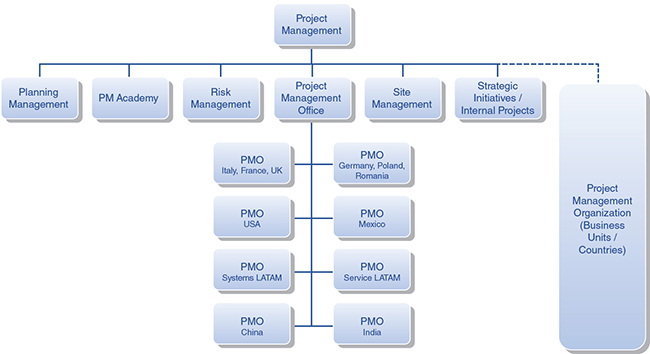
Figure 15-40. PMO geographical presence.
To ensure concrete operational effectiveness, completely geared to guaranteeing quality in PM, it is necessary to create an efficient mechanism of “osmosis” between areas of intervention, emphasizing the strength of their synergic management and maintaining integrated vision and control. By building on this level of mature awareness, we at Comau proudly face, on a daily basis, the difficulties that the business of the future has already put in our path.
The First Comau Global PM Process
A high degree of fragmentation at international level along with business sustainability problems led Comau to think about PM as an integration tool. As a result, common language and tools have been developed and spread across the organization.
Today, the high occurrence of multicountry projects—for example, a global client issues an order to Comau Inc. for an automated line to be placed in a plant in India. Comau Inc. develops the engineering of the plant while Comau China performs manufacturing and Comau India manages the installation—and the creation of global business units has led to a much greater degree of integration, forcing Comau to take a step forward.
It therefore became necessary to review the PM processes with the aim of harmonizing our way of working and managing projects throughout the entire organization.
To this extent, the Quality Department Office and PMO jointly sponsored an initiative to produce a global revision of the PM processes (see Figure 15-41), which was accomplished by cross-functional and cross-country teams, coordinated by the corporate PMO.
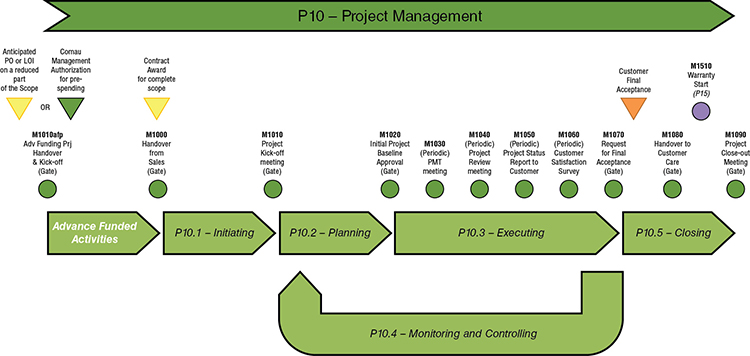
Figure 15-41. Comau global PM process.
We based the creation and development of global PM on the following sources (see Figure 15-42):
- Local PM processes in use in the different Comau branches
- Comau lessons learned
- PMI model
- Comau Global Policy of Execution
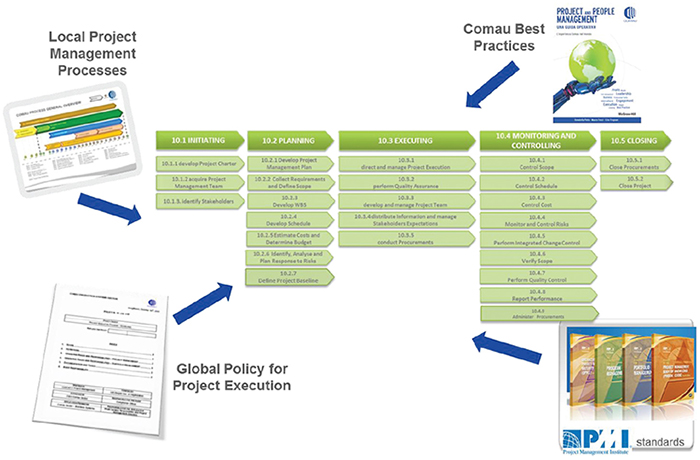
Figure 15-42. Project management process sources.
In order to ensure the creation of a real global process, we used the paradigm shown in the Figure 15-43.
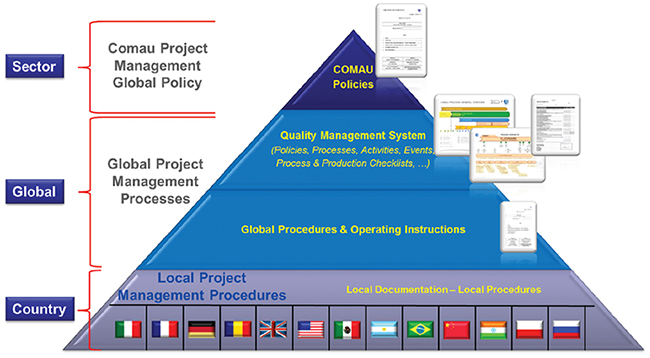
Figure 15-43. Project management process paradigm.
The Paradigm Pyramid has “Policy” on the top (at the sector level) which inspires the development of Global Procedures/Processes, “Operating Instructions” (at the global level), and the application of “Local Procedures/Operating Instructions” at the country level.
Comau Approach to Risk Management
In 2006, Comau started addressing risk management with a more focused, strategic approach, recognizing it as an essential part of the successful completion of projects. A risk management aspect was included in the PM Policy, thereby introducing the general rules for planning, assessing, handling, and monitoring variable factors to ensure favorable outcomes.
The increased organizational complexity and international scope of order management made it necessary to find more structured and refined tools for managing uncertainties. Consequently, in 2010, we created a Risk Management Office as part of Contract and Project Management. Its purpose is to better cope with the worldwide business environment and the increased project size and complexity, and provide internal support and governance to all ongoing projects/programs in the different business units and countries. Its task is to improve risk management and to collect and review lessons learned during the life cycle of Comau’s projects.
Assuming that effective risk management should be proactive, it is fundamental to identify issues that can potentially impact a project and work to diminish their consequences rather than simply reacting as issues emerge. As such, specific responsibilities of the Risk Management Office may include:
- Define corporate risk management rules
- Improve risk management approach throughout the project life cycle
- Perform project risk assessment (Project Health Check)
- Provide support to business unit/profit center for risk management in the bidding phase
- Provide support to business unit/profit center for risk management at the portfolio level
In 2011, following the need to harmonize the risk management approach throughout the worldwide organization, a common Risk Register tool and process were created and disseminated within the complete Comau organization.
Starting in mid-2012, as part of the opportunity to define the new Global Project Management Process, the Risk Management Processes and Rules have been established and included in the standard Comau processes. In this environment, Risk Management Offices act as providers of training and tips to support the teams during the start-up of risk management activities on relevant projects.
Starting in mid-2015, Comau decided to move a step forward in the integration of risk management practices and approaches into its portfolio governance and funded an internal initiative in the form of an innovation program called “Reinforcing Risk Management Practice and Enhancing Its Effective Application,” aimed at improving in the field at different company levels (contract sales, project execution, and portfolio management) and with a global perspective (see Figure 15-44).

Figure 15-44. The Comau Risk Management Program.
The business need at the origin of the program is for Comau to create and preserve a chain of value among the different company levels by reinforcing risk management and considering it a means to drive correct decisions, not just a control tool (see Figure 15-45).

Figure 15-45. Generating and preserving the company value chain.
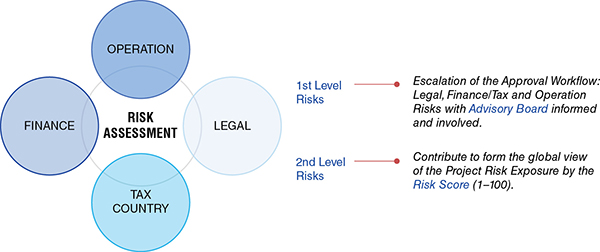
Figure 15-46. Risk management for new contracts//opportunities.
That need arises from the awareness that the automotive industry and its context have undergone deep changes in recent years; today projects are very complex, and the market is demanding and highly competitive: Effective investments and selection of business opportunities as well as the increased certainty of delivering performance according to targets is key.
Following the roadmap planned in 2015, the Risk Management Office for each of the core company areas developed and implemented improvements as follow:
Sales Risk Management (New Contract Acquisition)
- Implementation of a robust risk assessment within the sales process focused on the identification of historical//systematic risks and their mitigation before any contract coming into force. (See Figure 15–46.)
- Implementation of a wide binding offers approval workflow with the creation of risk advisors.
Project/Program Risk Management (Contracts Execution)
- Implementation of a lean Global Operative Instruction (GOI) for project risk management; definition of roles and responsibilities, milestones, and gates integrated with the PM process, risk standard metrics (probabilities, impacts, and exposures) and risk mapping.
- Implementation of a lean tool for the management of project risks named the Project Risk Register Portal (PRRP) housed in a content management system (CMS) to be the unique workplace for the project team (see Figure 15-47).
- Definition of KPIs to measure risk management effectiveness for each project, establishing objectives to seek continuous improvements.
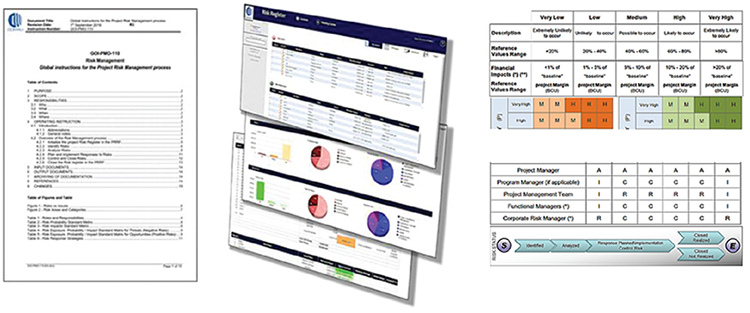
Figure 15-47. Global operative instruction and Project Risk Register Portal.
Portfolio Risk Management
- Development and implementation of a portfolio risk report (by business unit, region, country, etc.)
- Growing the company risk culture
- Development and delivery of risk management training for project and sales management professional families
Comau Project Management Academy
The first challenge the PM Academy had to deal with was its international nature: It had to provide a useful service for Comau companies in all the countries. To reach colleagues all over the world, we decided to create a knowledge exchange network that would be enriched by their contributions. In fact, the academy promotes the direct involvement of Comau PM experts to share knowledge and expertise. People performing day-to-day PM tasks have the best perspective on how to develop effective PM. The second challenge the PM Academy had to face was the need to be a cooperation center. The teaching staff is made up of qualified project managers who deliver training and support to PM professionals. In other words, the Comau PM Academy is “open”: Everyone in the company can participate in it (it is just a question of skills and interest). The goal of this approach is to achieve mutual growth: Involved individuals increase their skills and knowledge; the PM Academy receives a constant supply of new “vital blood.”
The Comau PM Academy is able to offer training on several topics:
- Courses on the essentials and fundamentals of PM (for team leaders and junior project managers)
- Specialized courses (for experienced project managers)
- Direct cooperation activities to support projects and the PM family (seminars, workshops, coaching, mentoring, insights)
- Training about risk management (either basics and advanced)
- Workshops to develop the ability to manage projects in a multicultural context
- Training to support PMP exam preparation
The PM Academy and PMP certification
Since Comau chose to adapt its own PM processes to PMI standards and recommendations, the PM Academy’s activities are PMI compliant as well. So it was a natural progression for us to apply to become a PMI® Registered Education Provider. The PM Academy has been a REP since 2008.
Thanks to this recognition, our academy can provide valuable training to support project managers in obtaining the PMP® certification. As a consequence, the academy has had to face a new challenge: to deliver training not only to Comau employees but also to customers. Today our educational activities are appreciated and requested because they mix qualified content, good methodology, and the concrete professional experience of our trainers (validated PM professionals).
The PM Academy Structure—Main Areas of Interest
The original basic conceptual model at the foundation of the PM Academy is a change management structured approach. On the basis of it, if you want new practices to take root, you have to deal with several domains at the same time. For this reason, the academy deals with the following areas:
- Knowledge. It examines and studies internal and external good practices, and explores the most valuable PM literature.
- Training. It designs and delivers educational programs and activities (for internal and external needs).
- Development. It manages a model to assess and support Comau PM staff.
- Communication. It organizes specific events to share and spread knowledge.
- Community. It encourages the development of a professional network and the creation of a positive professional environment.
- Maturity. It supports people in their sense-making of changes in culture and work approaches.
Organizational improvement success can come only if the previous dimensions are looked at altogether and if dependencies between them are addressed: PM Academy strives to achieve this result.
Comau Academy
For over 40 years, the Comau Academy has organized advanced training courses for executives, professionals, graduates, and students that are designed to create new skills for industrial automation and digital manufacturing. Comau Academy’s teaching programs target three types of participants: companies and professionals, young talent, and students and kids.
For companies and professionals, Comau Academy offers the new executive master’s degree in manufacturing automation and digital transformation that responds to the growing demand for new Industry 4.0 skills and professional growth using a 360-degree approach (see Figure 15-48).
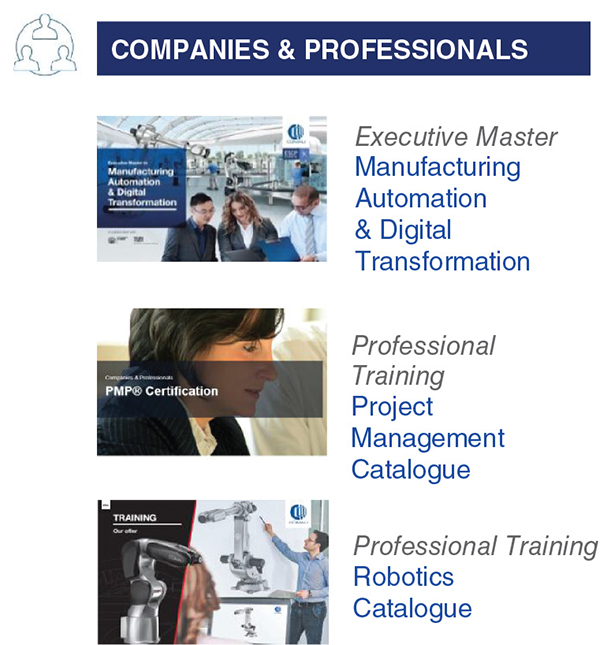
Figure 15-48. Comau Academy: companies and professional.
The young talent offering is dedicated to training of young university students from around the world and is conducted in collaboration with leading international institutes and universities. Among other degrees, Comau Academy offers special master’s degrees in industrial automation. The Project and People Management summer school is a 10-day intensive training program designed to meet the needs and future challenges of the working world. It is structured in four different editions, conducted in four different countries (United States, China, Italy, Brazil). and involves students from the best worldwide universities together with the best Comau managers (see Figure 15-49).
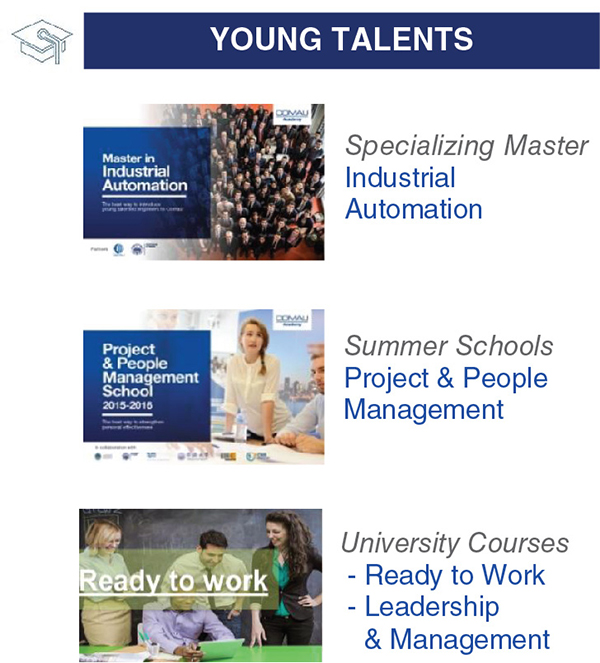
Figure 15-49. Comau Academy: Young talent.
For students and kids, Comau Academy organizes courses that allow students to obtain a robotics license and to participate in the Robo-School laboratory program designed for students in primary and secondary schools. It’s an innovative initiative, through which the students will use a robot within a classroom setting. e.DO, the educational robot, as a valid teaching tool, is able to make more intuitive and attractive the normal study subjects such as mathematics and art (see Figure 15-50).
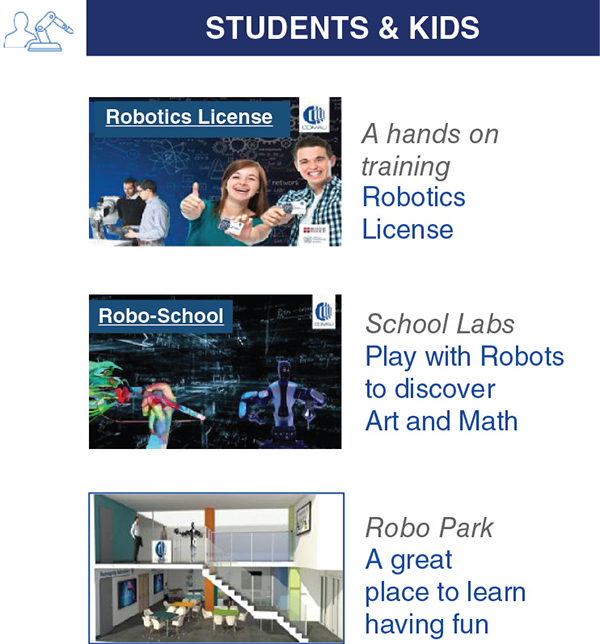
Figure 15-50. Comau Academy: Young talent tools.
Multicultural Project Management
Ninety percent of project teams in Comau projects are multicultural. For this reason, Comau has had to cope with problems people have in cooperating when they are from different cultures. Hence the idea to develop a specific program to provide project managers with tools that may help them in the building and managing of their teams.
We may refer to them as “soft tools” because they are conceived in order to develop project managers sensitivity about human factors impact to successful teamwork. This is a real challenge for project managers: being able to combine a systematic approach based on PM technical skills with human sensitivity for different models of value, ethics, and respect. If they want to achieve that, project managers need to look at themselves in a different way, as multicultural agents, active players with the responsibility to find strategies to integrate people across cultures.
Comau Unveils Its Best Practices
The long activity of developing people and processes resulted in the dynamic story of what Comau has achieved and what methodology was developed. In 2013, Comau published the Project and People Management—An Operational Guide, which is the story of a successful change in mentality mixed with the concrete processes and tools used by Comau people in their daily project activities (see Figure 15-51).
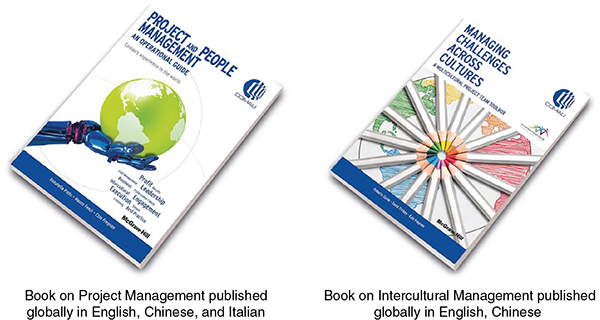
Figure 15-51. Comau publications.
A second book was published in 2015, Managing Challenges Across Cultures—A Multicultural Project Team Toolbox. It is based on the firm belief that culture is not only the result of a university education, but is also cultivated and developed in the workplace, every day, and then spread profitably outside the company perimeter.
The book opens with introductions by Professor Domenico Bodega, Università Cattolica di Milano, and Professor Harold Kerzner, of the International Institute of Learning. Afterward, there is a three-way discussion regarding the development of business strategies, PM, and the enhancement of people, led by Mauro Fenzi, CEO of Comau, Donatella Pinto, head of Human Resources at Comau, and author Roberto Guida, head of PM at Comau. David Trickey and Ezio Fregnan also examine key issues regarding intercultural behavior in a multinational context.
The book presents itself as a useful and practical toolbox that provides organizations, not just businesses, with practical instruments for immediate use in the management of projects requiring the collaboration of teams composed by people of different nationalities.
Some Lessons Learned
The true success of a project is based not only on profitability but also on knowledge that can benefit the entire corporation. Comau has created a list of lessons learned during its international projects.
- The ability to share best practices and organizational standards is even more important when working globally. It allows the exchange of information, workload sharing, resource leveling, and the like.
- People’s participation is critical. It is difficult to get people to understand the future benefits of managing a project and the importance of effective participation because it is related to personal knowledge, experiences, and empowerment. The ability to get people to participate is critical for change, speed, and buy-in.
- The development of quick wins is an important driver for business success
- Making people feel confident about the future is a buy-in driver. Today the importance of PM as a business solution for a global company is a strong driver for the PM family.
- More effective communication, transparency, and use of the open-door philosophy are strong drivers.
- Developing the PM and program management approach is important but not enough; the whole company must understand the business model of management by projects.
- Education in effective leadership is a key issue on a daily basis.
The PM approach has demonstrated that other functional groups must be equally receptive to the acceptance of PM, thereby reducing barriers and creating better products.
15.6 FLUOR CORPORATION: KNOWLEDGE MANAGEMENT FOR PROJECT EXECUTION9
Fluor Corporation Background
Fluor Corporation is one of the world’s largest publicly traded engineering, procurement, construction, maintenance, and project management (PM) companies. Over the past century, Fluor, through its operating subsidiaries, has become a trusted global leader by providing exceptional services and technical knowledge.
Consistently rated as one of the world’s safest contractors, Fluor’s primary objective is to develop, execute, and maintain projects on schedule, within budget, and with excellence. Fluor is a FORTUNE 500 company and is ranked number 1 in the “Engineering, Construction” category of America’s largest corporations. In addition, Fluor ranks number 1 on Engineering News-Record magazine’s list of Top 100 Design-Build Firms and number 2 on its Top 400 Contractors list. For Fluor’s clients, this recognition emphasizes Fluor’s ability to successfully execute large, financially complex projects around the globe.
Fluor’s revenue in 2012 totaled a record $27.6 billion, up 18 percent from the previous year. New awards were $27.1 billion, and the company’s business backlog at year-end was $38.2 billion. Through their individual and collective expertise, Fluor’s global workforce of more than 43,000 employees provides cost-effective, intelligent solutions in a timely manner.
Fluor maintains a network of offices in more than 25 countries across six continents. This workforce provides Fluor with the capability to execute diverse scopes of work on projects, both large and small, and the flexibility to staff projects in accordance with project needs.
Fluor serves clients in a wide variety of industries, including oil and gas, chemicals and petrochemicals, commercial and institutional, government services, life sciences, manufacturing, microelectronics, mining, power, telecommunications, and transportation.
Fluor is aligned into five principal operating segments: Energy and Chemicals, Industrial and Infrastructure, Government, Global Services, and Global Supply Chain. Fluor projects include designing and building manufacturing facilities, refineries, pharmaceutical facilities, power plants, and telecommunications and transportation infrastructures. Many of Fluor’s projects are the largest and the most remote, complex and challenging capital projects in the world.
Knowledge Communities in Support of Global Project Management
Fluor’s business environment is global, mobile, cyclical, and collaborative. Employees are located across the globe and must work together closely for distributed project execution, when multiple offices around the globe work on the same project concurrently. Workforce scarcity and mobility is a reality at Fluor, and access to experts from anywhere around the world is critical to its business environment. In addition, due to the organization’s aging workforce, knowledge retention is an increasingly important issue.
Through our knowledge management (KM) capability, Fluor integrates and leverages the collective intellectual capital of our employees for project execution excellence. Our vast knowledge base, called Knowledge OnLineSM, enables employees throughout our worldwide offices to access our corporate knowledge and contribute their own knowledge and expertise. This system promotes collaboration and provides a systematic way to capture, share, and reuse the company’s knowledge. To support global project execution, Fluor organizes around knowledge communities, and its Knowledge OnLine technology platform allows the distribution of work without moving people around. Fluor’s KM technology platform is positioned as the delivery mechanism for all practices and procedures, training material, collaboration, and expertise location. The overall strategic direction for knowledge retention, sharing, and collaboration tightly links with Fluor’s business environment.
At Fluor, we define KM as the way the organization identifies, creates, captures, acquires, shares, and leverages knowledge—it is a culture and management process, not a product or simply an information technology installation. Knowledge communities are designated networks of people who share information and knowledge. Community members share, collaborate, and learn from one another face to face or virtually. Communities are held together by a common goal and desire to share experiences, insights, and best practices within a topic or discipline using shared norms and processes. Communities are also accountable for capturing best practices and stewarding a body of knowledge on behalf of the organization. Communities at Fluor are formally launched and have community leaders, managers, and designated experts.
Fluor’s KM efforts have received several third-party awards for excellence, including the North American and Global Most Admired Knowledge Enterprise (MAKE) Awards, achieving “Hall of Fame” status for creating an environment for collaborative knowledge sharing. These awards recognize solutions that systematically leverage an organization’s knowledge and people to measurably improve organizational responsiveness, innovation, competency and efficiency. In addition, Fluor’s approach has been featured in the Harvard Business Review and the Wall Street Journal and in other books and articles.
Most of the targeted workforce is involved in one or more knowledge communities, sharing knowledge globally, enabling work processes, and bringing new people up to speed quickly. Fluor encourages knowledge-sharing behaviors across the organization. Any employee can join one or more knowledge communities and can post a question or answer a question. Answers to forum questions are usually received within 24 hours of posting—in keeping with Fluor’s promise of dependable and responsive communities—ensuring that all employees can have a high degree of confidence in the system.
Today, there are 49 established knowledge communities in the organization. Fluor has 30,000 active community members dispersed globally, and over 4,000 subject matter experts (SMEs) in over 1,200 subject areas within those communities. There is a high volume of community activity; there are more than 10,000 searches daily, 2,600 attachment views or downloads daily, and 10,000 forum reads on a weekly basis.
Knowledge Management Strategies to Support Project Execution
Fluor has a strong history of knowledge sharing, much of which is attributed to a culture that consistently supports such behaviors. The passion to build careers and knowledge is at the heart of Fluor’s business. The organization promotes a culture that is based on sharing knowledge across a network of employees. Leaders play an important role in sustaining this culture.
Fluor’s formal KM process began in 1999, when it launched its KM strategy. Fluor used a two-pronged approach by implementing both a codification strategy and a personalization strategy:
- The codification strategy involves documenting the knowledge and storing it in a database. The emphasis here is on knowledge reuse.
- The personalization strategy focuses on connecting people to people, creating people networks, and emphasizing customized solutions to unique problems.
Fluor’s aim is that new content should be moved quickly from a personalization focus into a codification focus in order to enable reusing the knowledge that is gathered.
One way that Fluor keeps communities relevant is by updating content on a regular basis. The organization implemented processes to ensure that communities frequently review and revise content. Each community is expected to take responsibility for its intellectual assets.
Why use this two-pronged approach? The KM team realized that emphasizing explicit knowledge over tacit knowledge would not have worked because it would have been looked on as “just another tool.” Yet focusing solely on the tacit knowledge would have resulted in a lack of documented knowledge and a lack of global, cross-functional impact.
Enterprise Projects, Enterprise Thinking
Fluor’s approach to KM is unique, requiring enterprise thinking and a global mind-set—an approach rarely seen in other organizations. This approach is taken to support Fluor’s global projects. At Fluor, every employee has access to every community, a rigorous community deployment process is followed, community performance measurement and auditing programs are in place, and knowledge-sharing behaviors are integrated into all aspects of company operations.
Fluor’s enterprise-wide KM vision was to have one technology solution that included communities with integrated content, discussions, and people profiles to promote a global mind-set. Leveraging the collective intellectual capital of all employees to support business strategic direction was a key objective. Communities were designed to provide optimal solutions to customers by sharing knowledge across geographic and business-line boundaries, using a robust search capability, and allowing global access. Enterprise-wide KM was also targeted to enhance the skill sets of employees through ready access to knowledge, training material and by connecting them to expertise. Finally, enterprise-wide KM protects intellectual property in the organization. The system monitors activity to safeguard intellectual property.
Knowledge Communities: Where People Gather
Knowledge communities are supported by leaders, knowledge managers, a global core KM team, and subject matter experts. A centralized KM team oversees community activities and works closely with leaders, knowledge managers, and subject matter experts across the enterprise.
Fluor utilizes a strong governance model, as shown in Figure 15-52, for community creation, defining community objectives and measuring performance. Fluor has observed other organizations that offer an ad hoc community creation model or offer a core set of templates developed by the KM team to any group interested in creating a community. Experience has shown these open community creation models result in ineffective and redundant communities.

Figure 15-52. Fluor governance model
Fluor’s enterprise-wide approach to KM requires an expanded mind-set for deploying and maintaining performing communities beyond what is required when the KM approach is targeted to a segment of the company, is regional, or is not open to all employees. Fluor applies four enterprise thinking concepts across its KM program:
- Stewardship. This involves taking responsibility for the intellectual assets entrusted to the community (people and explicit content); not managing content that should be managed by another community; reporting gaps—don’t create it unless you really own it, and if you own it, keep it up to date.
- Member’s-Eye View. Creating an environment that allows all employees to “get it” without expending excess effort. Something may make sense while self-contained in one community, but from a member’s-eye view (and across the enterprise), it can be confusing, so we help employees think about how to solve engineering and business problems, not how to decipher custom community (website) navigation.
- Client Credibility Test. Expect that a client will see the information. Have frequent live demonstrations to potential customers.
- Community Franchise Expectations. Support the Fluor KM brand, be a leader among community peers, leverage KM best practices across communities, and create pride across all communities.
Knowledge communities do have flexibility: Each community establishes its own objectives that are aligned with the overall organization strategy but specific enough to define what the community of people needs to achieve in order to support the strategic direction. Community leaders are the highest authority within the function. In this leadership role, they are responsible for improving overall performance within their respective functions; selection, implementation, and updates of best practices; selection and support of software tools unique to their function; and functional people development. They make up a network of functional community leaders (Global Excellence Leaders) who create consistency across functions.
When a new knowledge community is launched, it goes through a management process that includes the following concepts over a period of time determined by the urgency of the community leadership:
- Readiness assessment
- Community leadership strategy
- Community kickoff
- Community structure
- Content collection concepts
- Priority content identification
- Content collection update
- Launch strategy
- Community launch
- Deployment to performance transition
- Community performance plan
- Ongoing performance meetings
- Initial deployment
- Performance
Within each community, a structure of categories is established based on core competencies, as stewardship of the explicit assets is critical. This approach includes creating a process to have an expert review and approve new content, expert review and update of content as it reaches a review date, and dependable and responsive expert answers to questions in discussion forums.
Community performance is measured by how well a community meets its objectives. Within the technology implementation, numerous statistics are collected. These statistics, while not a real measure of performance, provide an indication of activity levels and usage and track some levels of compliance.
Expertise Forms the Backbone of the Knowledge Community
Real-world experience is no substitute for an application or algorithm. Fluor’s network of SMEs) forms the backbone of the company’s knowledge efforts. Engaging these experts is critical to community, project, and company success. These SMEs form the nucleus of every community. The frequency with which an SME participates in a community impacts the quality and quantity of community content. Experts are chosen by the leaders of each community—people can’t just declare themselves experts; they have to be recognized by others as such. SMEs receive KM process training that communicates critical expectations so they can function effectively. They subscribe for automatic discussion notifications and receive updates when documents require review or feedback. Aligning content and forums with areas of expertise makes it easier to automatically notify SMEs when their expertise is needed.
Success Story: Access to Design Alternatives Saves Project 1 Million Euros
A process engineer in a startup office in the Middle East was looking for alternatives to a costly piece of equipment that was in the design basis of the project. He wanted to challenge the need for the piece of equipment, because it came at a very high total installed cost to the project.
Although he was in an office without all typical functional resources, through access to Fluor’s global knowledge base, he was able to access design manuals, obtain expert responses to forum questions, and review past project references. This resulted in him being able to recommend the elimination of the expensive equipment, which saved the client 1,000,000 euros plus additional operational and maintenance costs.
The client was so pleased by the short response time and the quick access to Fluor’s worldwide knowledge and expertise that it awarded a new 700,000 euro work order for a similar study at another facility.
The SME Protégé Program is another platform designed to promote early engagement of future experts. The program pairs entry- and midlevel employees with senior-level experts and promotes accelerated learning. SMEs work with employees to create relationships, discuss project technical areas, develop new knowledge, review existing knowledge, and help answer forum questions.
Leadership Is the Key to Success
Effective leadership is the best predictor of success for Fluor’s knowledge communities. Knowledge leaders serve and communicate openly and frequently with communities and are visible role models of desired behaviors. Community leaders recognize that they are helping to create a knowledge sharing culture and facilitate people-to-people connections. Leaders also make sure it is “safe” for employees to ask questions, share openly, and trust the answers they receive. In addition, knowledge leaders recognize that a community is a human community, not a technology implementation. Leaders understand they are responsible for the human capital component of their communities and encourage lifelong learning.
It is also important that knowledge leaders acknowledge the talent and intelligence within the organization. Leaders inspire community members to combine experience and innovative thinking to create new knowledge, and they encourage the community to work smarter through collaboration.
Finally, leaders connect the community with strategic direction and drive for business results. They know that greater energy is available when people are connected through a sense of purpose.
Work Processes for Knowledge Management Communications
An integral part of Fluor’s KM strategy has been effective communication. Fluor utilizes several communication principles to ensure effective and timely communications. Fluor believes it is important to leverage all the communication channels within the organization and proactively look for opportunities to communicate about KM and how it enables project execution
Fluor has numerous communication strategies in place in support of knowledge retention and transfer. A few of these include:
- New hire orientations. Employees are exposed to Fluor’s knowledge sharing culture during recruitment and new-hire orientation. Specifically, the new-hire orientation materials challenge employees to share knowledge across Fluor’s global networks in order to succeed in the organization. Since career mobility is enhanced by community participation, many employees quickly engage in community activities.
- Knowledge manager training
- Global teleconferences
- Department meetings
- Lunch-and-learn sessions
- Online community front-page success stories that change every two to three days
Another work process improvement is linked to the organizational communication strategy. The old practice was to disseminate information via the organizational hierarchy. However, not everyone saw those communications. Now communities send messages directly to the entire community membership. As a result, messages have a broader readership (greater penetration), which keeps people in the know and helps attract new members. Each message is sent as an email with a link to supporting information in the knowledge community. The link approach is for tracking and, sometimes, for compliance purposes. Employees frequently reply to messages and are encouraged to join a particular community as part of a routine follow-up.
Recognizing KM Pioneers … and Beyond
Since Fluor began on its knowledge sharing in support of global projects path, it recognized that it had to recognize those so instrumental to its success and adoption. Early on, it recognized KM Pioneers—people who looked outside of normal geographical or business-line boundaries to see how knowledge sharing and collaboration could be institutionalized globally. Today Fluor has two successful recognition programs in place. The first program is for peer recognition of knowledge-sharing behaviors, and the second program recognizes the value generated through knowledge sharing and collaboration. These two programs help Fluor to tell the stories of why knowledge sharing and collaboration is important not just for Fluor but for individuals.
Fluor developed an annual KM peer recognition award known as the KM Pacesetter. Peers nominate one another year round for this prestigious award. A KM Pacesetter is someone who excels in knowledge-sharing behaviors. In 2012 alone, there were over 1,000 nominations from Fluor employees all over the world, and to date, hundreds of people have been recognized as KM Pacesetters. Fluor feels this campaign is successful because it is employee driven—employees get to recognize the good work their peers are doing, and in turn the company is able to highlight them as KM Pacesetters.
The second campaign is an annual KM success story contest as part of an annual “Knowvember” celebration. The KM team helps gather KM success stories that articulate the value that is being brought to people and projects around the world. These stories are varied and have different value propositions. This is important, as there is no one-size-fits-all value proposition when it comes to a workforce of 30,000. The secret to the value of the success stories is that, usually, there is something that resonates with everyone, and they can share the success with their project team or replicate it themselves on their project.
According to Peter Oosterveer, Group President, Energy & Chemicals, “Knowledge sharing is now clearly an institutionalized part of our culture, whereby value is created for our clients through an open, transparent, and collaborative structure, which is interestingly enough very reflective of today’s modern and successful societies.”
Knowledge Management in the Context of Project Management
When KM is considered in the context of PM, two high-level areas must be addressed:
- Knowledge sharing and collaboration across projects
- Knowledge sharing and collaboration within a project
Each area has unique aspects and opportunities to deliver value to the project and the organization. Figure 15-53 provides a view of these two types of knowledge sharing and collaboration.
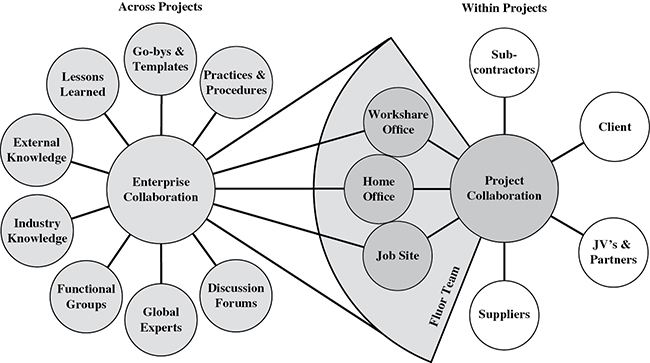
Figure 15-53. Knowledge collaboration.
Knowledge Sharing across Projects
Project execution organizations develop a considerable base of knowledge gained from the number of past projects executed. Some of this knowledge is explicit and is leveraged through a codification strategy. Other knowledge is tacit and requires a personalization strategy to tap the potential value.
Documented knowledge takes many forms, including project completion reports, practices, guidelines, lessons learned, and other content that provide the framework for project execution processes and can be stewarded in a readily accessible sharing platform. Other examples of documented knowledge include risk mitigation reports, unique solutions developed on the project, analysis reports of alternatives and recommendations, and value awareness suggestions.
A significant amount of accumulated knowledge is tacit, however, and is based on personal experience that employees gain over many years on many projects in many locations for many clients. This knowledge resides inside the heads of the organization’s most experienced people. It is not written down, and even if it were, the context and interpretation would make it very difficult to use properly. Unless this knowledge is brought to bear on new projects, it is, in effect, a company asset that goes untapped.
To be successful with knowledge sharing across projects, content and expertise must also be accessible in ways that meet the needs of the project participants seeking the knowledge.
The goal of knowledge sharing across projects is to continually improve project performance through the application of knowledge and experience acquired during execution of prior projects. For employees, knowledge sharing across projects creates opportunities to learn from peers around the world, new employees can be brought up to speed quicker, and a sense of confidence is developed knowing that the global community is available and willing to assist.
As an example of knowledge sharing across projects, a recent engineering graduate was hired by Fluor and was sent to a job site. One day he was challenged by the client and site manager. At a recently installed pipe rack column, one of the mounting studs did not stick up high enough to properly tighten the nut and washer. This was a never-before-seen situation for the new employee, but his reply was “Don’t worry; I’ll have an answer by the end of the day.” He went back to the construction trailer, typed his problem into a discussion forum, and SMEs provided the necessary procedures within one hour. Instilling this type of confidence in all employees, not just new grads, is a huge benefit when knowledge is readily shared across projects.
As the organization has recognized the value of global collaboration, many examples of work process innovations have emerged. For instance, KM is integrated into Fluor’s operating system requirements, which is the overall quality program for the company. All of Fluor’s key operating documents are delivered through, and maintained in, Knowledge Online. These work process documents are updated frequently, based on project experience and changes to industry codes. During the update process, the proposed changes are posted in the appropriate knowledge community, and any employee can make suggestions.
Knowledge Sharing within Projects
Collaboration and knowledge sharing within a project is as important as sharing across projects. This type of collaboration is different in that the parties involved can include the contractor, the client, joint venture partners, suppliers, fabricators, and other organizations. Requests for information, interface management, vendor document reviews, and design and progress reviews are examples of interactions that benefit from knowledge sharing and collaboration within a project.
Challenges that may be encountered when trying to share knowledge and collaborate within a project include situations where: each organization may have its own KM technology platform, a culture for knowledge sharing may not be present, and concerns exist regarding intellectual property. The overall goal, however, should be that each organization that makes up the extended project team not only assigns individual members but also has the capabilities to bring the combined intellectual assets of its organization to the project. As new knowledge is developed through project execution, it should be available for reuse by each organization.
Communication and knowledge-sharing approaches should be part of an alignment session when a project kicks off and when fabricators or suppliers are brought on board.
Key Success Factors
Research into KM initiatives indicates a very high number fail to deliver on expectations—as high as 80 percent. With over a decade of successful knowledge sharing and collaboration, Fluor has applied the following key success factors to guide their KM activities.
- Align KM objectives with business strategy. Knowledge sharing and collaboration should be applied to a business challenge or strategic opportunity with a business mind-set. Simply building a KM or collaboration platform without solid strategic reasoning is a leading cause for KM failures. The organization is more likely to adopt and demonstrate desired knowledge-sharing behaviors when clear business needs and expectations are defined and communicated.
- Employees form the core of Fluor’s knowledge-based service strategy. Enthusiastic people; active, supportive, and involved leadership; and strong people networks are critical to success. Knowledge retention and transfer behaviors must span the employment life cycle from recruitment through retirement. It is equally important to define and communicate knowledge-sharing expectations and to instill desired knowledge-sharing behaviors into the organization culture.
- Use technology to support the global community. While successful KM programs place a strong emphasis on people, connecting a globally distributed workforce requires a robust technology platform. To minimize the learning curve and user confusion, creating an enterprise-wide, one-stop shop to connect employees regardless of location or time differences eases adoption.
- Emphasis on communications. To sustain communities, it is important to make sure that early success stories become daily occurrences. Strong community sponsorship must communicate value on a regular basis and promote community engagement.
- Share knowledge across boundaries. Incorporate enterprise-wide thinking into your KM strategy. Make sure your KM processes engage the global community at the outset.
- Leadership has a direct influence on KM success. KM success is directly tied to leadership support. Project managers are in a position where their visible support directly influences the strength of knowledge sharing and collaboration both on their specific projects and across the whole organization. Project managers in particular need to leverage innovations, encourage project team members to seek out expert advice, encourage members to submit new knowledge, and recognize the talent and intelligence within the organization.
- KM allows project managers to leverage the best knowledge and expertise of their organization, across the boundaries of time and space. KM informs project team members, helping them make better decisions and improving the final results of the project.
Future Directions for Knowledge Management on Projects
When you have successfully applied KM and achieved measurable results—where do you go next? Consider the next areas of opportunity.
Anticipatory Delivery of Knowledge
When project teams become comfortable sharing and leveraging knowledge, the project benefits. The responsibility for knowledge sharing today still falls largely on the shoulders of each project team member, accessing knowledge or expertise when a need arises. How can you manage the process, anticipating the need for knowledge and expertise? How do you ensure that the project leverages the best available knowledge, regardless of the initiative of the individual project team member?
The future lies in the anticipatory delivery of knowledge. This starts with a proactive approach to delivery using a facilitated knowledge-assist session—sometimes called a peer assist.
The Knowledge Assist
The knowledge assist is a planned, facilitated session to bring together all of the potential project resources for the purpose of sharing experiences and knowledge with the project team prior to project execution kickoff. Results of the session are documented with identifiable actions or suggestions to be used and followed. The goal is to learn before doing.
A successful knowledge assist requires planning and preparation. You need to have the right people available and hold the assist at the proper time, because the value of the session diminishes over time. The earlier you can hold a knowledge assist session, the greater its potential positive impact on the project.
Connections beyond the Project Team
Most knowledge is tacit. It is the hidden know-how that sits in the heads of each project team member and other outside resources. Most of this know-how will never be exposed in a document or online source. It surfaces at the intersection of need and experience. At that intersection, a transaction occurs—an exchange of knowledge from one person to another. People connecting with each other remain the most important conduit for knowledge transfer on projects.
When managing a project, several emerging technologies can help facilitate those people-to-people connections. Purposeful social computing, using social collaboration tools, allows people to connect across boundaries of time and space, leveraging the best available know-how, and enabling these connections to occur wherever people are, using various devices. In many cases, this will mean via a wireless mobile or tablet device.
Knowledge in Context
Starting the project well informed by a knowledge assist session is essential, but it is not the only point where knowledge and expertise are needed. As the project team grows comfortable with sharing and leveraging knowledge, they will take the initiative, reaching out or sharing when needed. The challenge is to get full participation. To do this, you need to have context about the task at hand. As we know the task at hand for a given project team member, we can begin to deliver the knowledge and expertise related to that task. This contextual delivery of knowledge informs all project team members and helps ensure that are fully informed.
Contextual delivery of knowledge relies on an understanding of a project team member’s current activity and the ability to connect related knowledge and expertise in the stream of their work process. Leveraging and sharing knowledge does not involve a conscious decision or an extra step; it is embedded within the activities that they are already doing.
For example, an engineer working on a stair tower design could quickly connect to past examples, connect with other experts, or reference industry codes and practices to inform design decisions.
Accelerated Expertise Development
On January 1, 2011, the first Baby Boomers reached retirement age. Since then, over 10,000 Boomers reach retirement age every single day. This pace will continue through the year 2030. The risk of knowledge loss due simply to a retiring workforce is tremendous, but can be mediated.
In the book Outliers, Malcolm Gladwell suggests that “the idea that excellence at performing a complex task requires a critical minimum level of practice surfaces again and again in studies of expertise. In fact, researchers have settled on what they believe is the magic number for true expertise: ten thousand hours.”10 There are no shortcuts to expertise, but there are ways to apply attention to the issue by encouraging person to person transfer of knowledge.
The first step is to identify a career path that acknowledges and encourages expertise growth. Recognizing that your project team may work together on future projects, consider the opportunities to stretch and develop team members.
For the current experts, pair them up with mentees. The protégé can assist the expert, taking some of the workload from a highly valued, in-demand team member. And this pairing provides a clear opportunity for knowledge transfer while developing the next generation of experts.
KM gives project managers the ability to leverage the best available expertise, often including resources outside of the immediate project team. By learning from other projects, your project gets a head start toward success. The key is to start early and provide clear leadership to your team. Define your expectations, and encourage team members to participate in sharing knowledge and expertise within the project as well as across project boundaries.
Your understanding and support of KM provides the necessary foundation for smarter project execution.
15.7 SIEMENS PLM SOFTWARE: DEVELOPING A GLOBAL PROJECT MANAGEMENT METHODOLOGY11
For decades, large companies have allowed their multinational divisions tremendous autonomy in the way they do business. This works well as long as the various units do not have to interact and work together on projects. But when interaction is required, and each division has a different approach to project management (PM)—using different tools and processes—unfavorable results can occur. Today, the trend is toward the development of an enterprise-wide methodology. Siemens PLM Software is an example of a company that has successfully developed such a methodology.
* * *
About Siemens PLM Software
Siemens PLM Software, a business unit of the Siemens Industry Automation Division, is a leading global provider of product life-cycle management (PLM) software and services with 5.9 million licensed seats and 56,000 customers worldwide. Headquartered in Plano, Texas, Siemens PLM Software works collaboratively with companies to deliver open solutions that help them turn more ideas into successful products.
About Siemens Industry Automation Division
The Siemens Industry Automation Division (Nuremberg, Germany) is a worldwide leader in the fields of automation systems, low-voltage switchgear, and industrial software. Its portfolio ranges from standard products for the manufacturing and process industries to solutions for whole industrial sectors that encompass the automation of entire automobile production facilities and chemical plants. As a leading software supplier, Industry Automation optimizes the entire value-added chain of manufacturers—from product design and development to production, sales, and a wide range of maintenance services. With around 42,900 employees worldwide Siemens Industry Automation achieved in fiscal year 2008 total sales of 8.7 billion euros.
Abstract
A methodology has been developed by Siemens PLM Software, a business unit of the Siemens Industry Automation Division and a leading global provider of product life-cycle management (PLM) software and services, that includes project and program management, technical activities, and project governance. It is based on the use of an internal website allowing quick access for all employees, and the method has been successfully deployed and taught globally. The remainder of this section describes the background of the project methodology and identifies best practices for similar efforts in the future.
Project Background
Siemens PLM Software develops and deploys enterprise software for product life-cycle management, which includes solutions for computer-aided design, manufacturing and engineering analysis (CAD/CAM/CAE) as well as for data management, collaboration, and digital factory simulation. The company’s global sales and services organization is responsible for configuring and deploying the solutions at customer sites. Engagements can range from small projects over a few man-months to large multiyear global programs with hundreds of people. These projects have been executed against several different methodologies at locations worldwide. Due to the increasingly global nature of manufacturing companies and the increased demand for a variety of subject matter experts from around the world, the initiative to create a single global methodology for Siemens PLM Software was started.
Business Benefits
The following business benefits drove the development of the new methodology:
- Sharing best practices and good examples across projects and geographies
- Accelerating project deployment through quick access to tools, guides, templates and best practices
- Establishing a common methodology “language” that is used across all geographies and projects
- Sharing resources around the world and quickly developing new hires and external employees
- Enabling increased repeatability and predictability resulting in reduced risk and faster delivery times
- Providing a structured project/program governance framework
- Increasing reuse of information in projects; laying the foundation for knowledge management
- Presenting a unified and consistent project management (PM) experience for global customers
Methodology Development
Once the initiative was started, the first decision was to develop our own methodology or procure an off-the-shelf PM methodology. Management, together with the project team, decided on developing our own methodology based on existing in-house experience. The key decision criteria was that the methodology must cover not only the PM activities but also the technical activities specific to our business. It was crucial to work on both the PM and the technical tracks together in each phase since quite a few projects are done in small teams and sometimes even the project manager has the dual role of also being the chief technical solution architect. Another key criterion was that we wanted to leverage what we already had in terms of processes and templates. We also anticipated a much higher adoption rate if the people in the field recognized parts of the methodology.
The project was planned and a PM plan was written and signed off by the project sponsor. The project team consisted of key persons from all zones: Americas, Europe, Asia-Pacific, and our in-house offshore team in India who implemented the methodology website. In total, the core team consisted of approximately 10 people.
The scope of the project was developed and included the following:
- The methodology must cover the entire life cycle of a service project, from inception to close down. In addition, it must contain program management and governance.
- General PM activities will be included in a section that is the same for all phases: “Manage Project.”
- Technical activities will cover methods on how to identify out-of-the-box solutions while keeping customer customizations to a minimum as well as modern techniques, such as rapid prototyping and iterative development.
- The activities in each phase are structured and had to be described; responsibilities of each task had to be defined; and template guidelines and supporting tools had to be available.
- The methodology had to be aligned with surrounding processes, such as the sales process and postproject support process.
- Consolidate various existing service delivery methods, leveraging recognized best practices already existing within the company.
- The PM track must be aligned with Project Management Institute® process and terminology.
- Start with a comprehensive methodology, then a “small projects” version has to be developed.
- Technology would include a website with content management and a feedback tool with tracking functionality.
- A downloadable version must be available for all employees working outside the internal network, such as in the defense industry.
- Training and deployment globally.
The team worked virtually through conference calls but also had three face-to-face meetings in various locations around the globe, each four to five days long. The project to develop the methodology lasted 10 months. If we had been all in the same location, the time would have been significantly shorter.
At the start of the project, Siemens PLM Software was known as UGS, an independent and privately owned company. By the end of the project, UGS was acquired by Siemens and renamed Siemens PLM Software. It was kept as an intact business unit. Since the methodology is tailored to our PLM business, management decided to continue the project and deploy the methodology. Alignment with the mandatory Siemens PM aspects would take place in consecutive releases.
Resulting Methodology—PLM VDM—Description
The product life cycle management value delivery methodology (PLM VDM) provides a structured process for delivering a PLM solution. (See Figure 15-54.) PLM VDM emphasizes the unique aspects of delivering an enterprise-wide solution using Siemens PLM Software products and has been adopted across the Siemens PLM Software services organization.
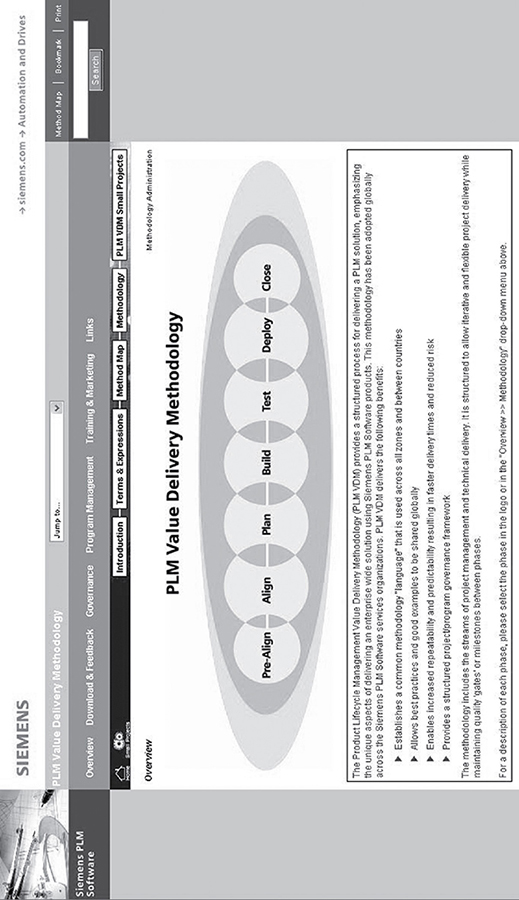
Figure 15-54. The PLM VDM internal website.
PLM VDM encompasses both PM and technical delivery work streams. It is structured to allow iterative and flexible project delivery while maintaining “quality gates” and milestones between phases.
The seven methodology phases are:
- Pre-Align
- Align
- Plan
- Build
- Test
- Deploy
- Close
Each phase is discussed in turn.
Pre-Align
The purpose of the Pre-Align phase is to gain a sufficient understanding of customer requirements and the scope of the project to be able to define the high-level solution outline and statement of work.
The pursuit team works with sales and the customer to establish the overall project scope, determine a preliminary project schedule, define the services strategy, conduct an infrastructure assessment, and develop the initial project budget.
Align
In the Align phase, the project team works with the customer to transform the solution concepts that were defined during the Pre-Align activities into a well-defined overall solution architecture.
- The objectives of the Align phase are to establish a common understanding between the customer and the implementation team on all aspects of the project by capturing a complete and accurate project definition through technical workshops, use case definition, rapid prototyping, and aligning the solution requirements to the out-of-the-box product capabilities.
- This phase is complete when the customer accepts the use cases and requirements and authorizes the work to proceed.
Plan
In the Plan phase, the project team works with the customer to develop the remaining documents that are used to execute and control the project and to develop the technical design.
- Depending on complexity of the solution, the team defines detailed plans for scope, schedule, cost, skills, resources, risks, quality, and communication.
- In addition to the test environment, the team “baselines” the system infrastructure to create a stable platform for the development, test and training environments.
- This phase is complete when all necessary PM plans and the required functional and design specifications have been reviewed and base lined.
Build
In the Build phase, the team works with the customer to create the defined solution, adhering strictly to the requirements.
- During the Build phase, the technical team configures and tests the solution, implements the data migration strategy, and develops the training materials. The Build phase also includes internal unit and integration testing.
- This phase is complete when the solution is ready for customer testing.
Test
In the Test phase, the team validates that the solution is ready for production use.
- During the Test phase, representatives from the user community perform functional and system tests to verify that the system fulfills the requirements.
- This phase is complete when the solution is accepted by the customer and is ready for deployment into a production environment.
Deploy
In the Deploy phase, the team delivers the production-ready solution to the end users.
- Deploying the solution consists of ensuring all the data has been migrated to the production environment, the solution is working with all interfaces, and users and help desk teams have been trained.
- The Deploy phase completes when the solution has been turned over to the customer for production use.
Close
In the Close phase, the team ensures that all administrative aspects of the project are complete.
- During the Close phase, the project team completes and archives project documents and conducts project retrospective to capture and document lessons learned. The project team is released.
Additional sections of the methodology include program management, small projects, governance, training and marketing, launch and deployment, and lessons learned and best practices. Each of these sections is described next.
Program Management
Following the PMI standard, the five phases of program management are described including supporting templates:
- Preprogram setup
- Program setup
- Establishing program management and technical infrastructure setup
- Delivering incremental benefits
- Closing the program
Small Projects
Projects smaller than US$100,000 in total revenue can select a simplified methodology, with shorter activity descriptions and simplified templates.
Governance
Project governance is about the line organization making sure that the project is governed correctly and ensuring efficient and effective decision making, steering the project to success. This is done by ensuring that the following are in place:
- Project charter
- Assigning project manager authority
- Project steering board
- Management review board
- Technical review board
- Project health checks and project retrospectives
- Approval process for new projects
Best practices are described in these sections together with supporting templates. This is an area where the alignment with the mandatory Siemens processes is done.
Training and Marketing
This important section covers material for training, release updates, links to PLM VDM training on the internal training site, and presentations of the methodology internally and for customers.
Launch and Deployment
The launch and deployment of the methodology globally includes these activities:
- Announcement at conferences in each of the geographies. Management reserved time for the methodology to be presented, which sends a positive and powerful message to all employees.
- Developing a one-hour overview of the methodology as a voice-over presentation. This is made available on the in-house training infrastructure, and participants can view this globally over the intranet.
- Developing training material for a two-day classroom training. This training is then given in many classes on four continents to approximately 600 persons over six months. This training covers all roles and included exercises.
- Additional live presentations in conference calls for several hundred other people.
- Developing marketing collateral; fact sheet for the methodology—same format as for our products, developing a logotype and customer presentations.
- Follow-up activities; monitoring adoption through KPIs and acting on users’ feedback.
Lessons Learned and Best Practices
Developing a methodology in a remote/virtual team is possible, but plan for several face-to-face meetings. These meetings are crucial to the success of the project; to bring all together in one room for longer workshops, divide work and make break-out sessions, assemble all participants again and take final decisions. It is also important to get to know each other and have fun in off-hours—this makes working remotely much more efficient. These meetings also serve as a recognition of the contribution made by all.
Involve key persons in the various geographies in the development early on. It takes much longer than a pure top-down approach by a central PMO. but these persons became champions in each geographic location during the deployment and significantly increase long-term adoption rates.
If you need a pure PM methodology, consider procuring an off-the-shelf product.
If you need a business-specific project methodology, consider developing your own. Most often there is tremendous knowledge in the company; it is just a matter of getting hold of it, put it in writing and making it available globally within the company
Getting management buy-in is crucial to secure the active participation of key persons, to get slots at conferences for the announcement; and to get the logotype of the methodology visible in top management presentations, which is essential for adoption.
Don’t underestimate the time it takes to develop training material and to give the training globally. The success of this methodology is due to all the hard work done by the dedicated people successfully completing these tasks.
